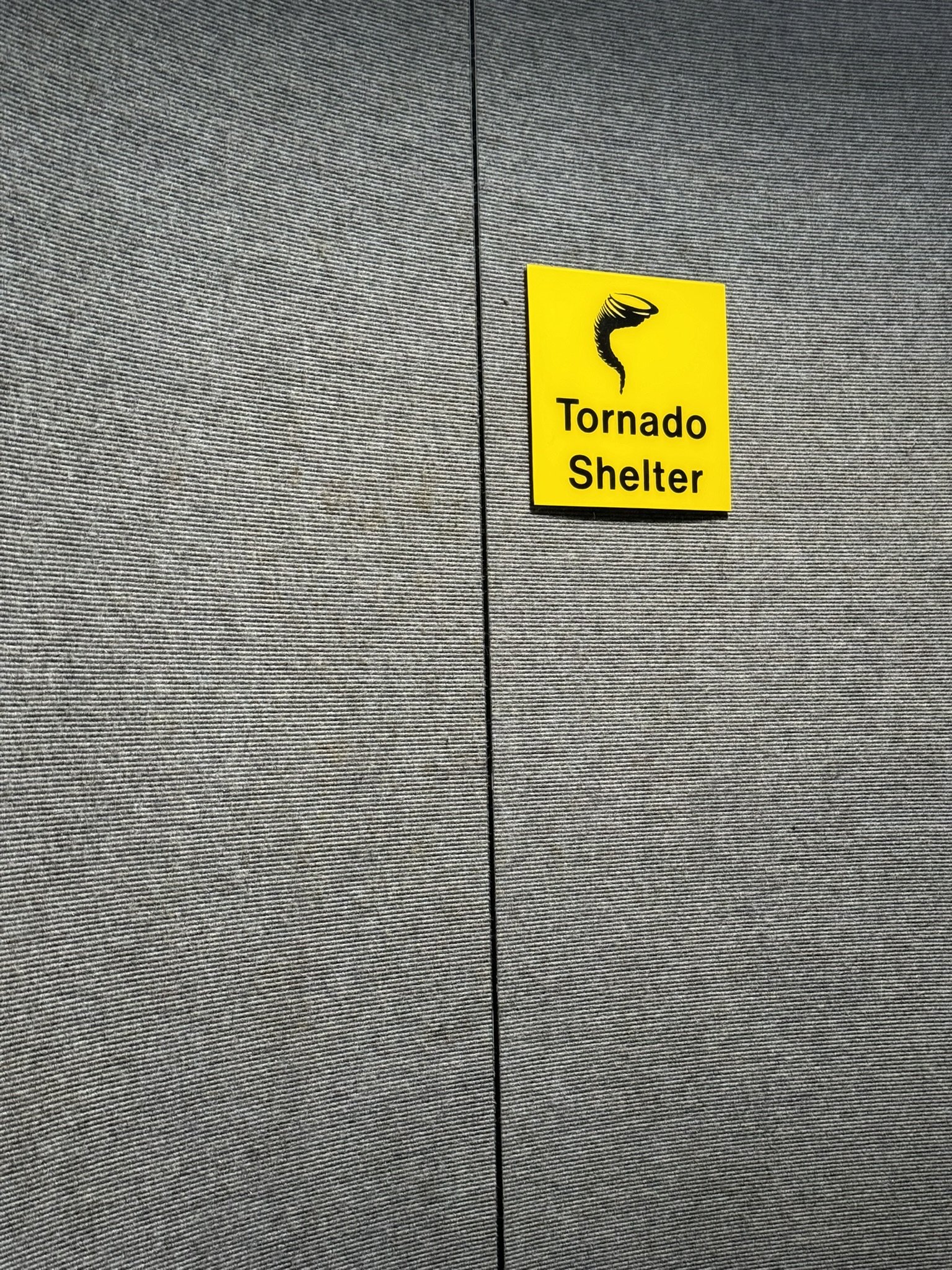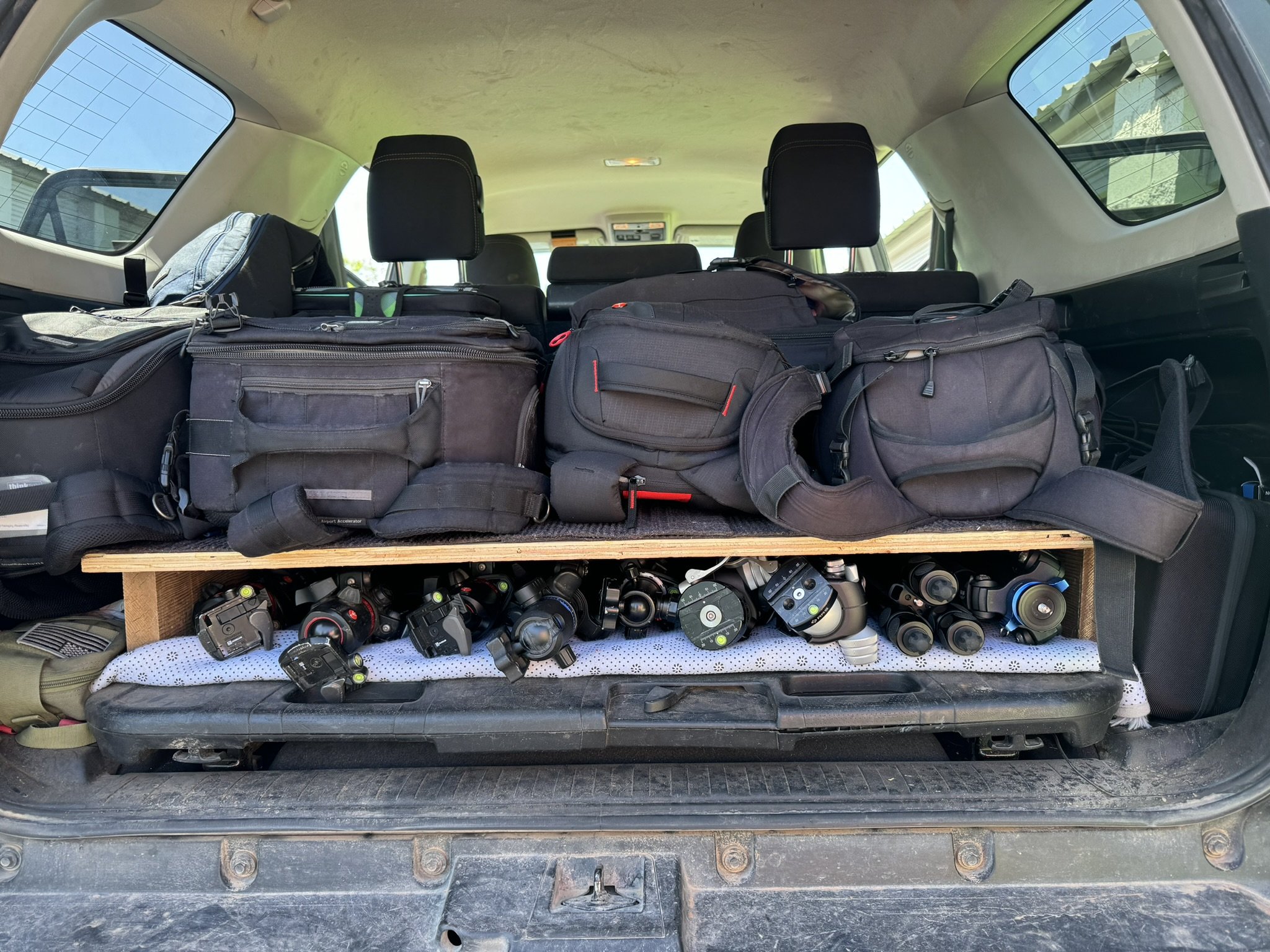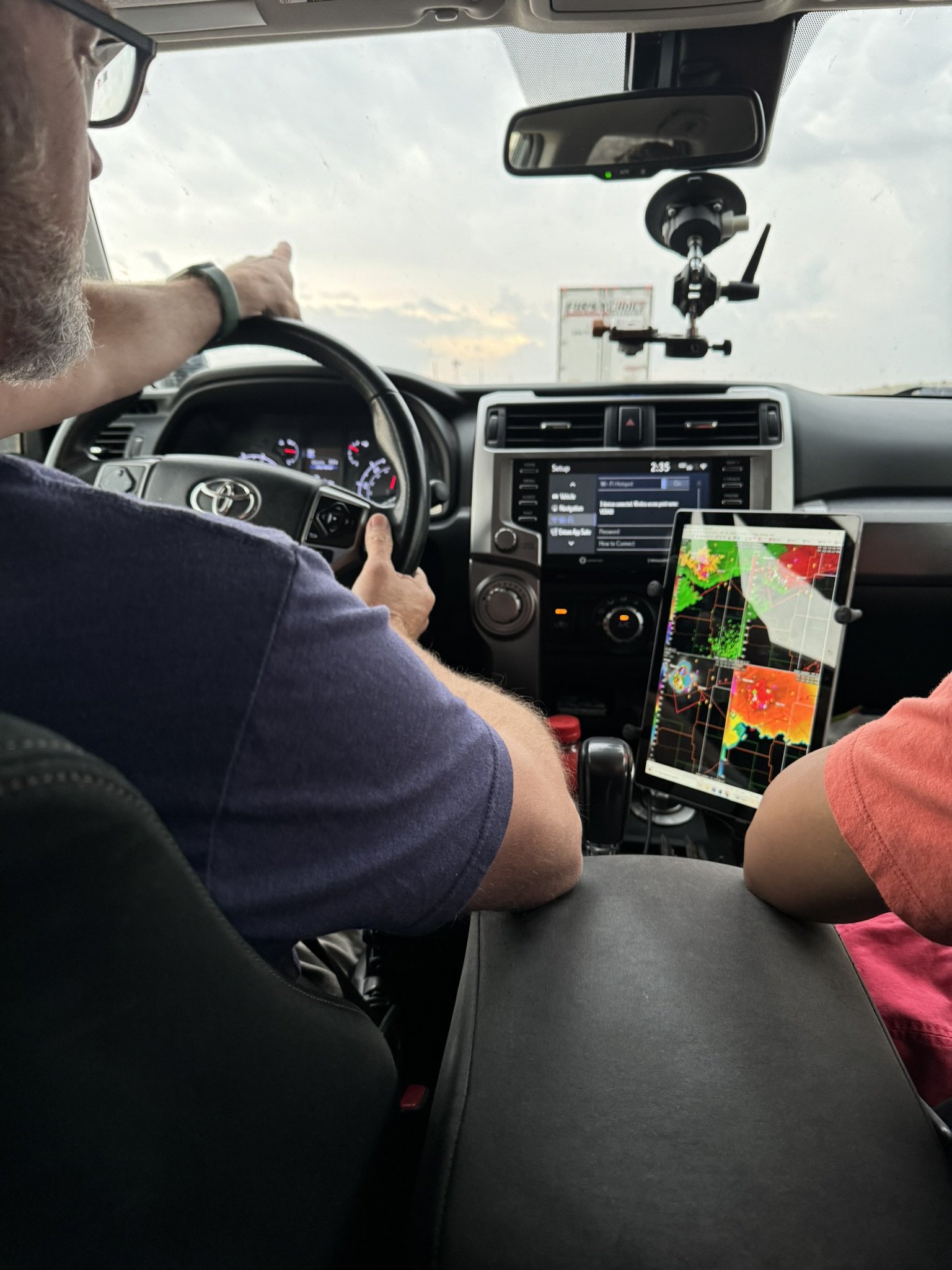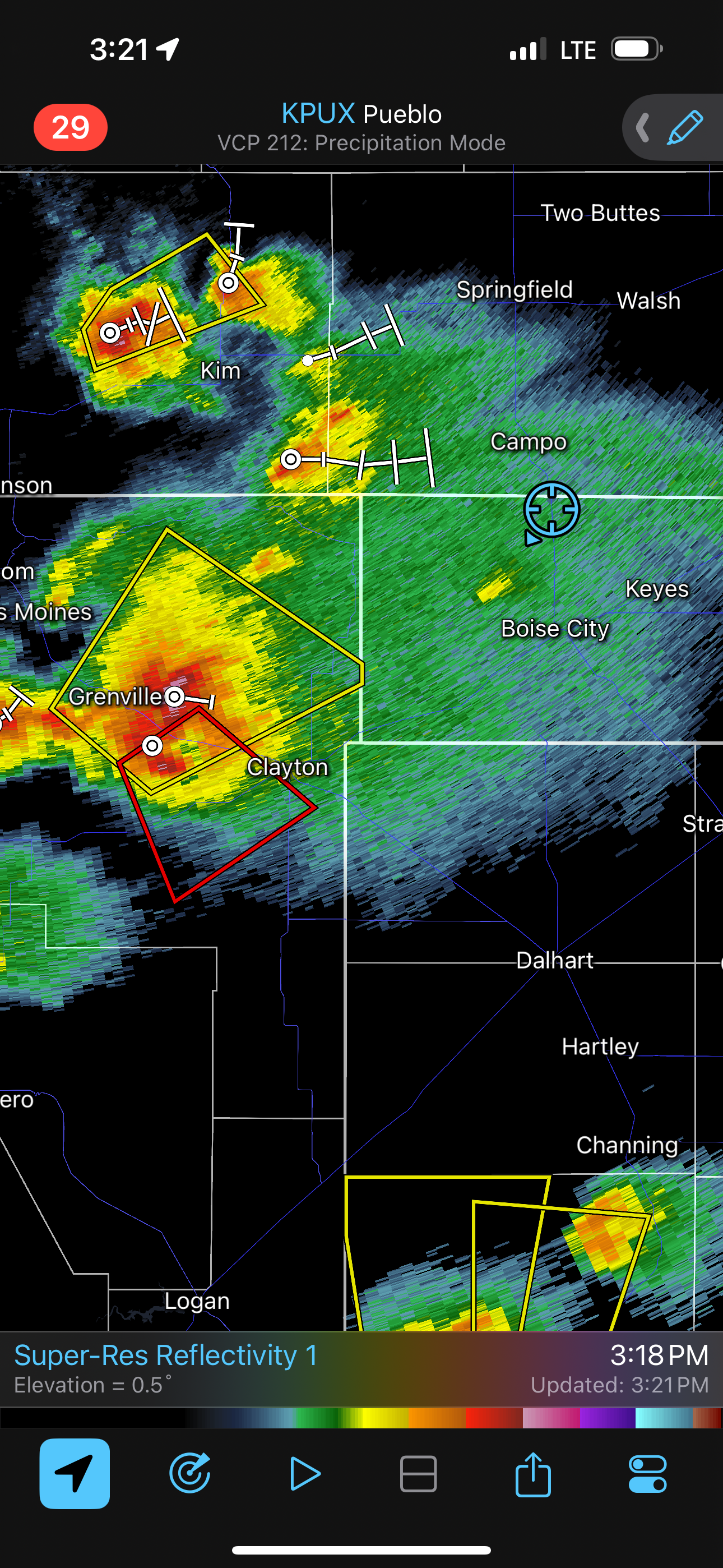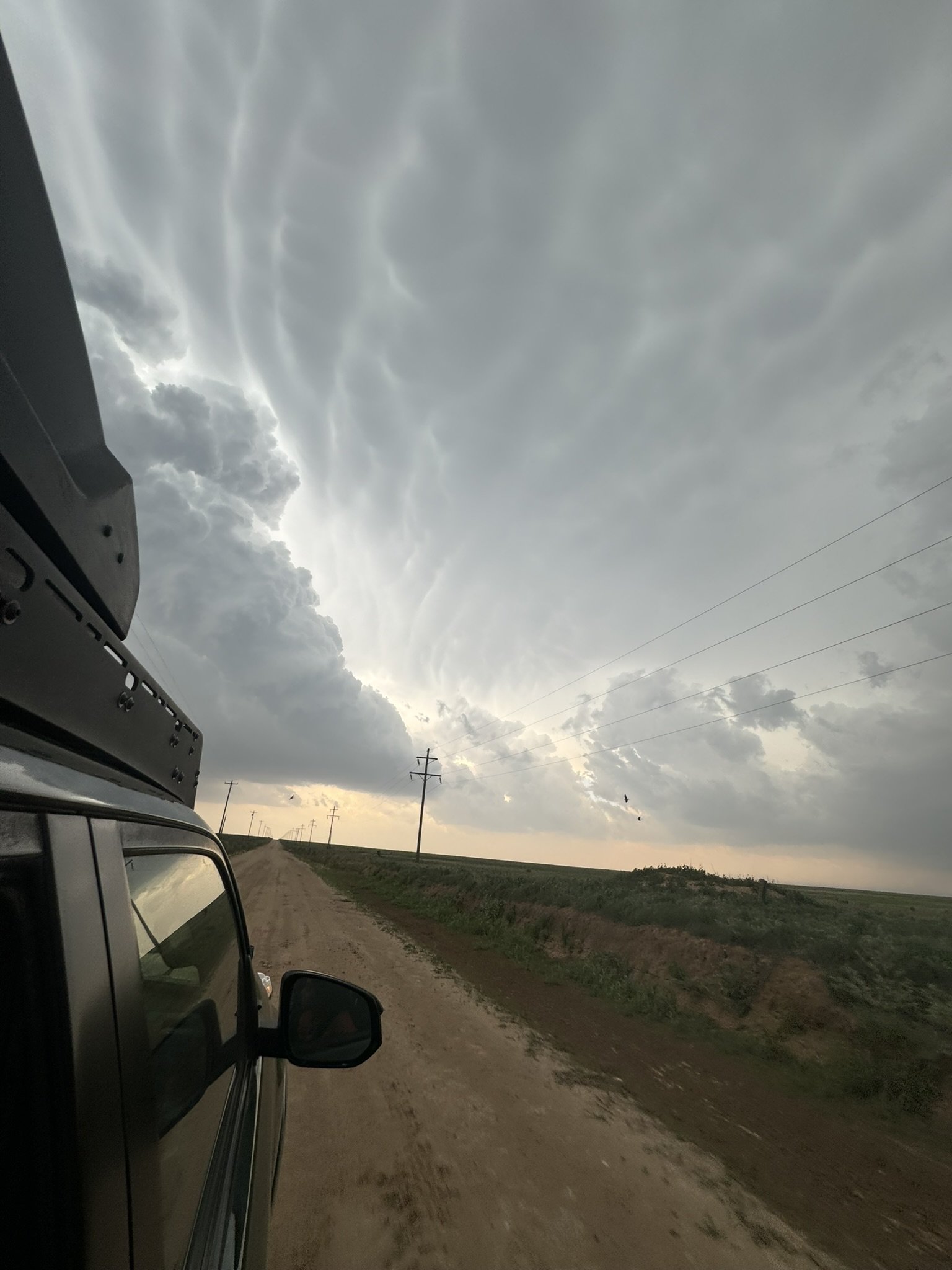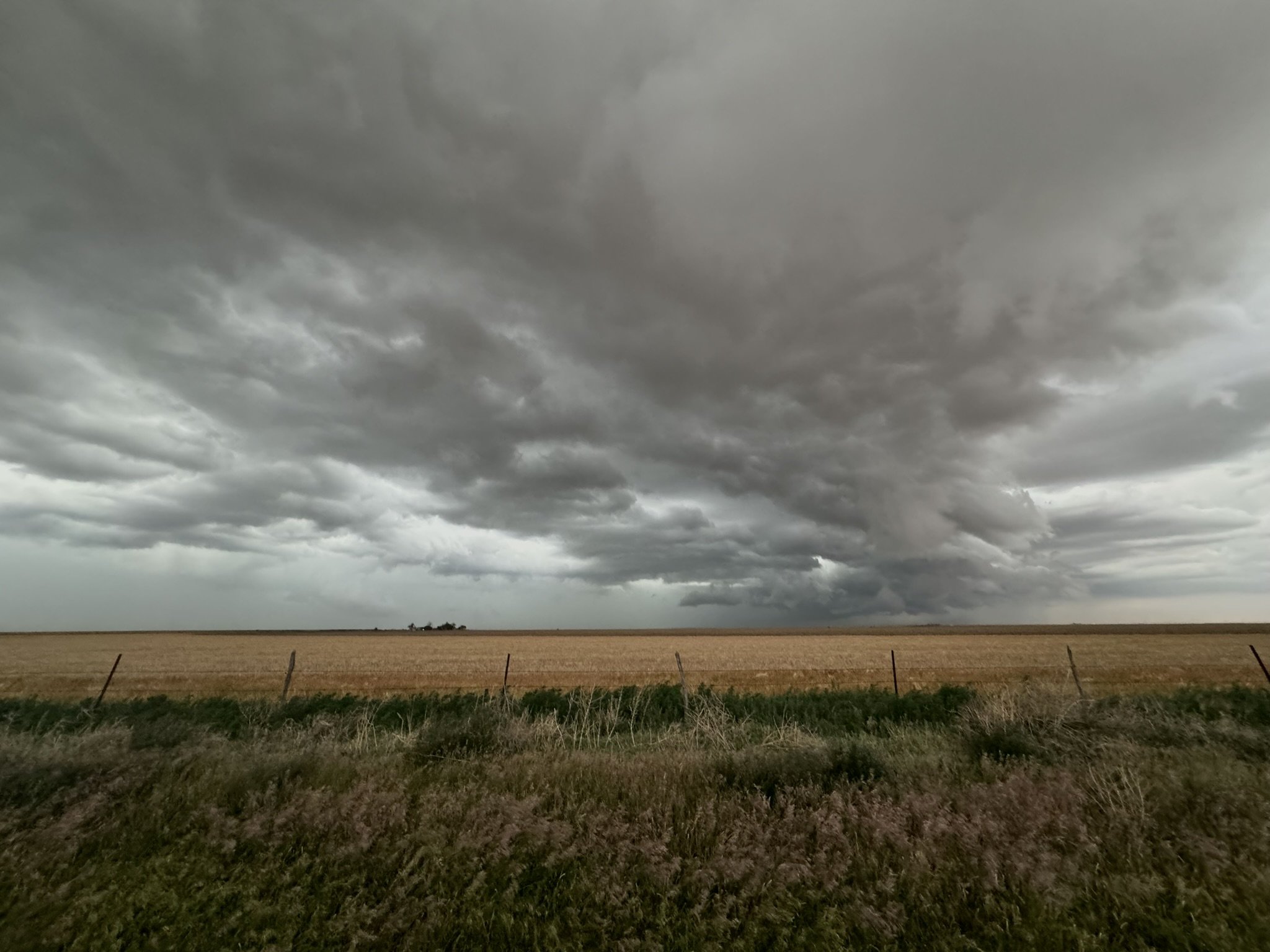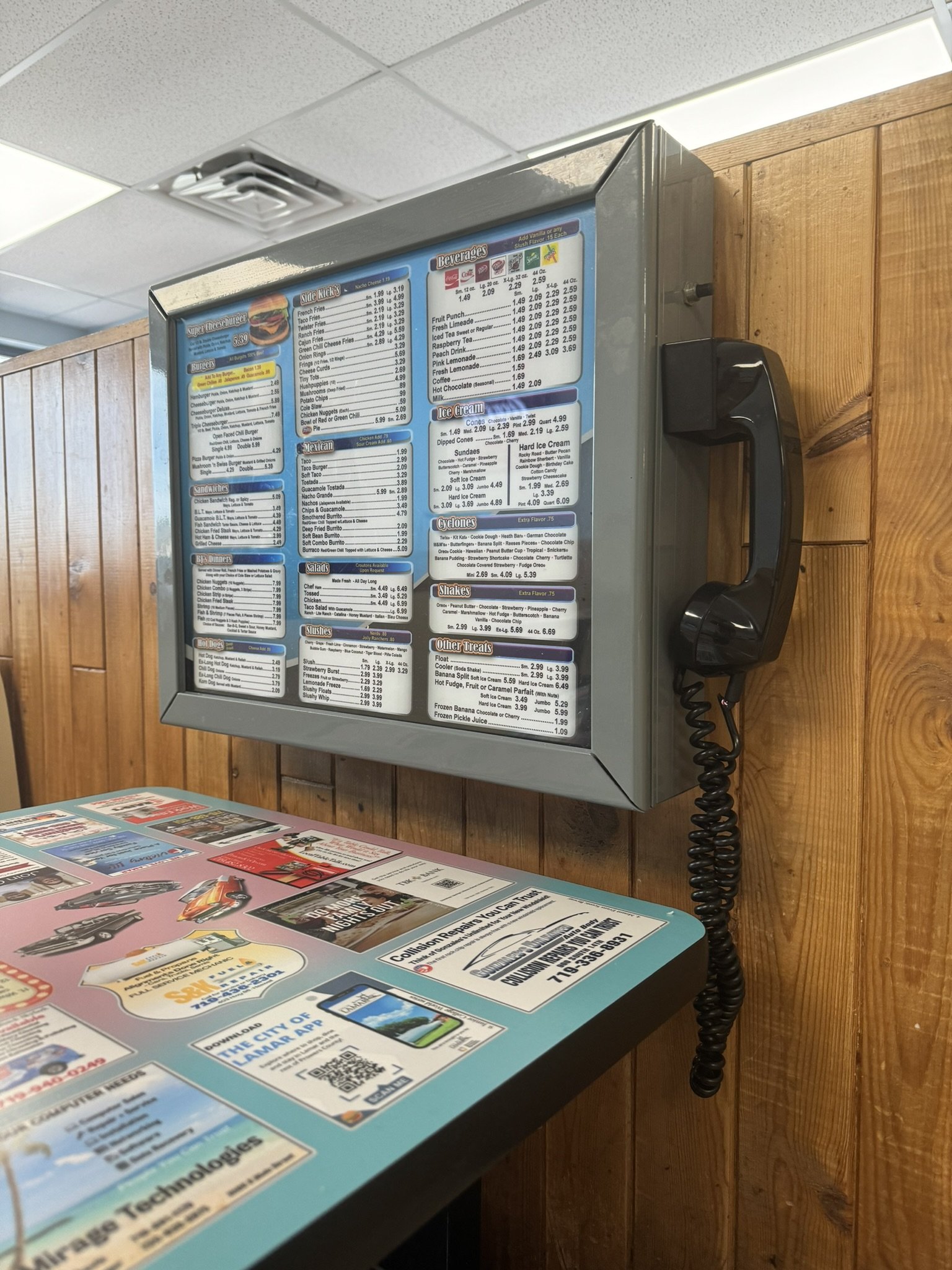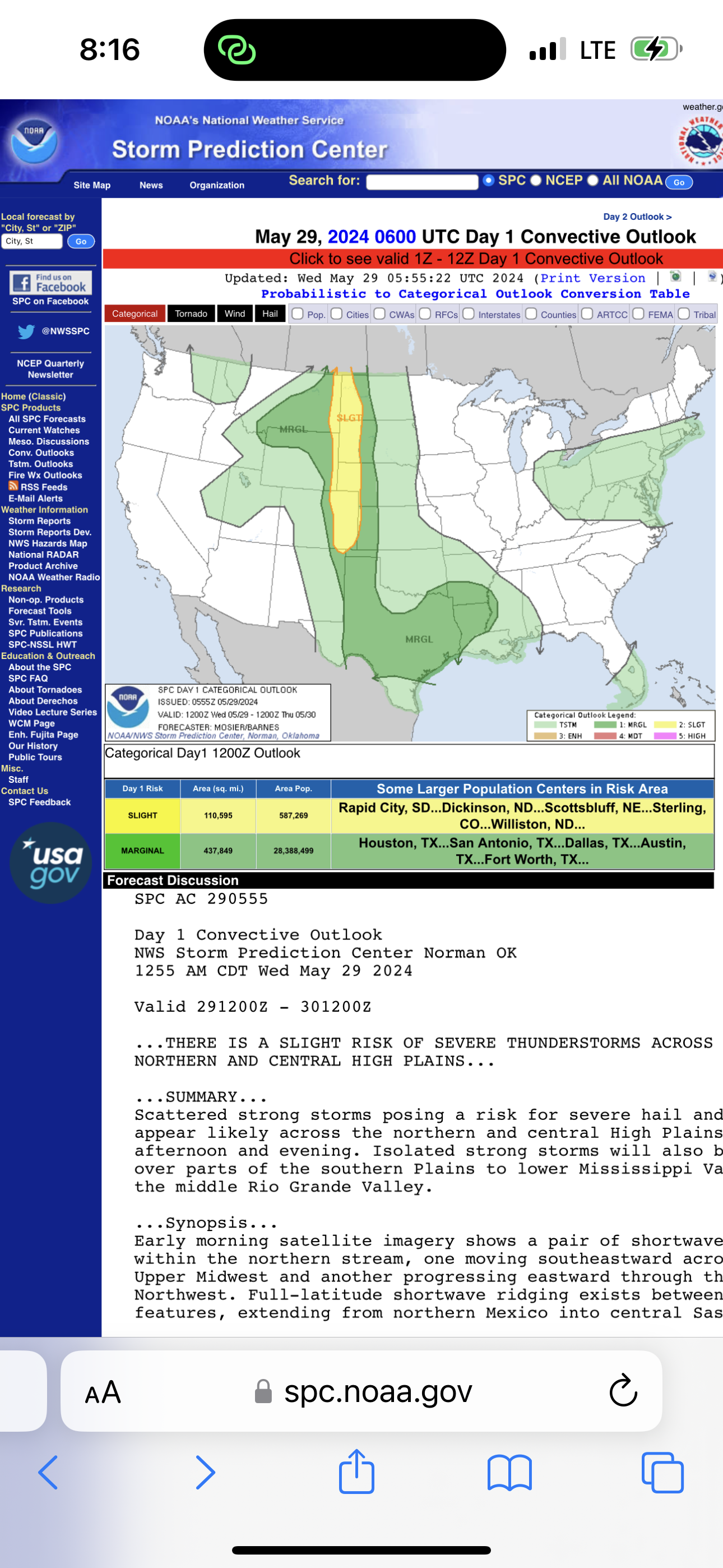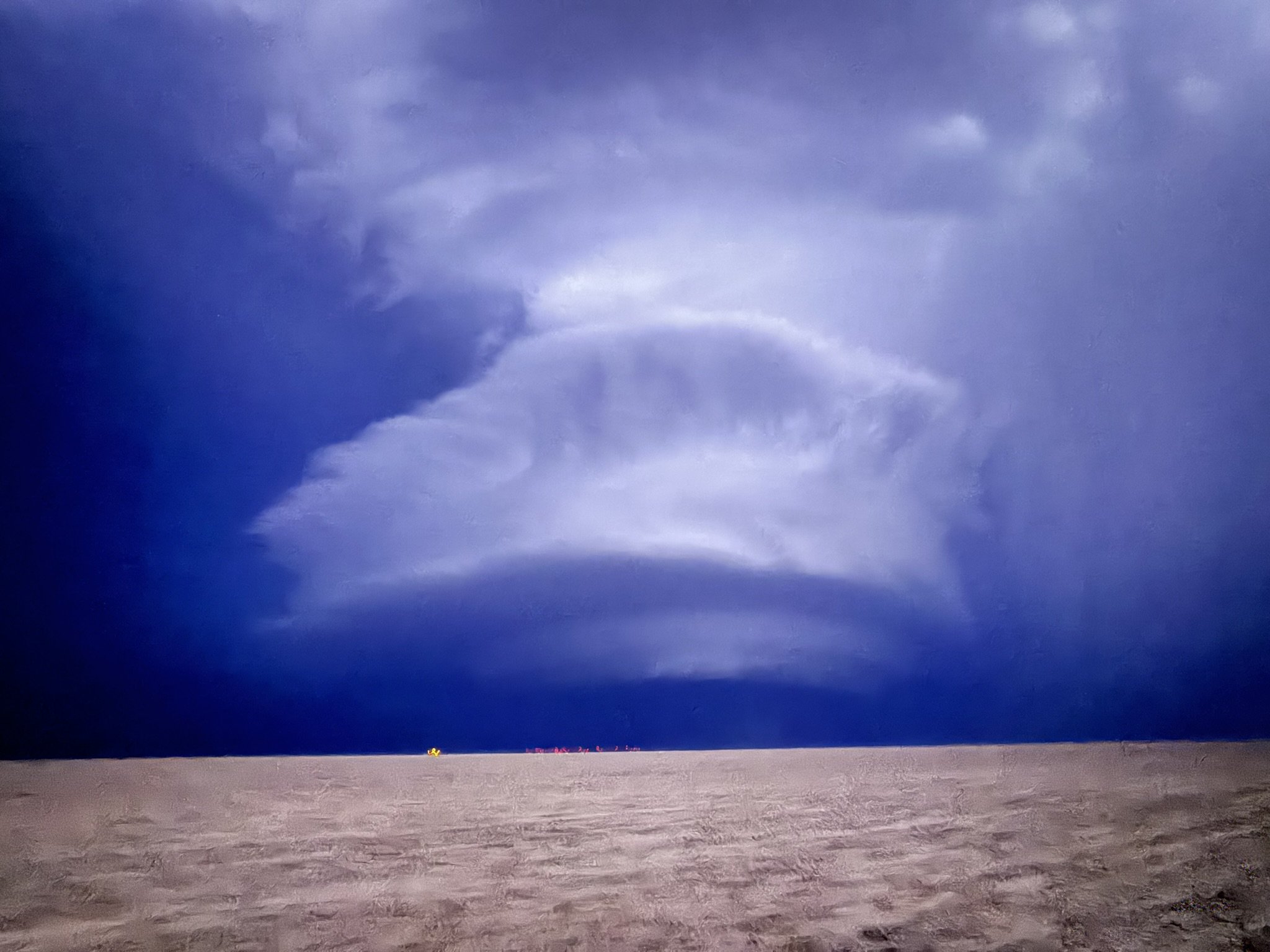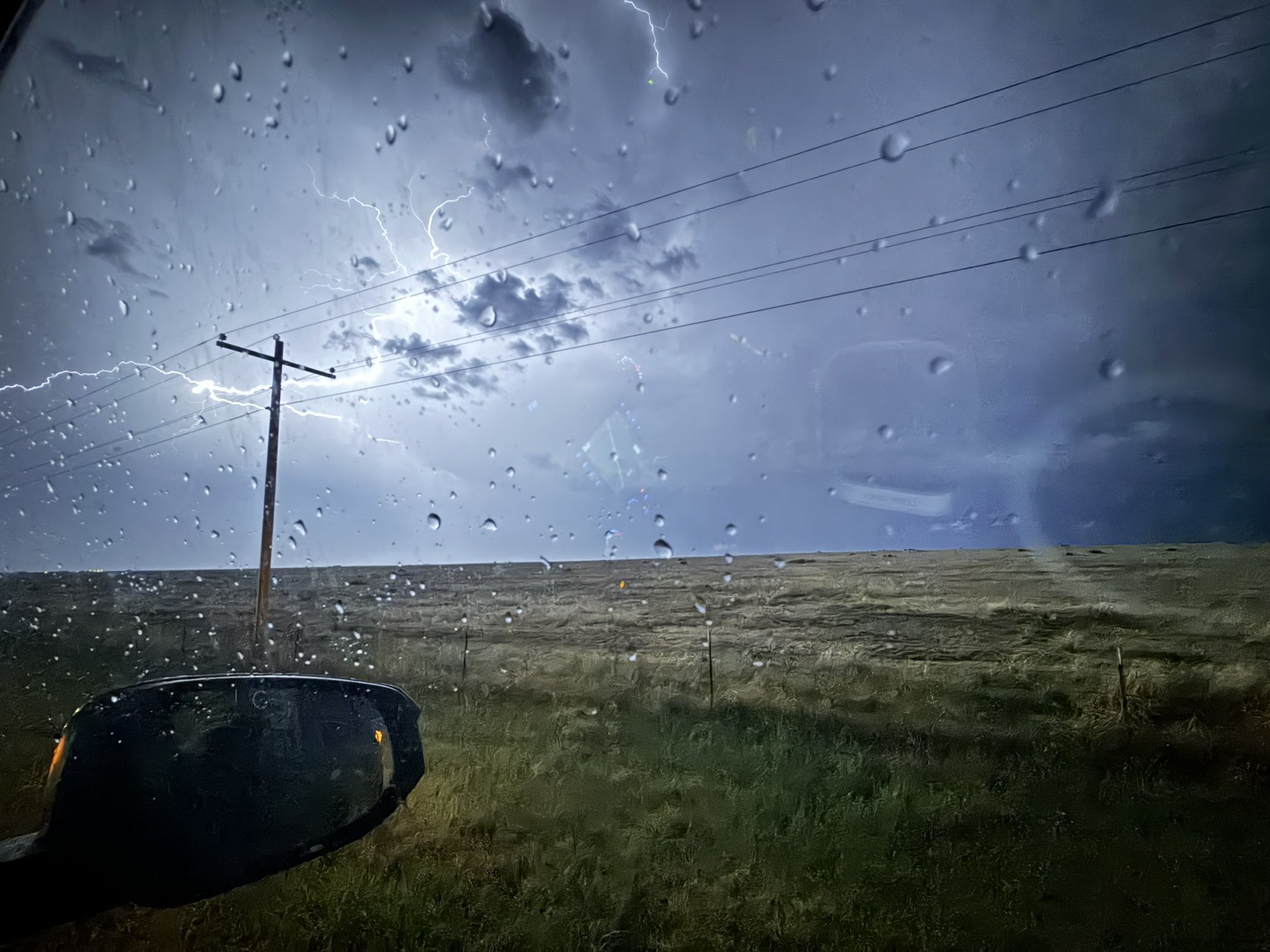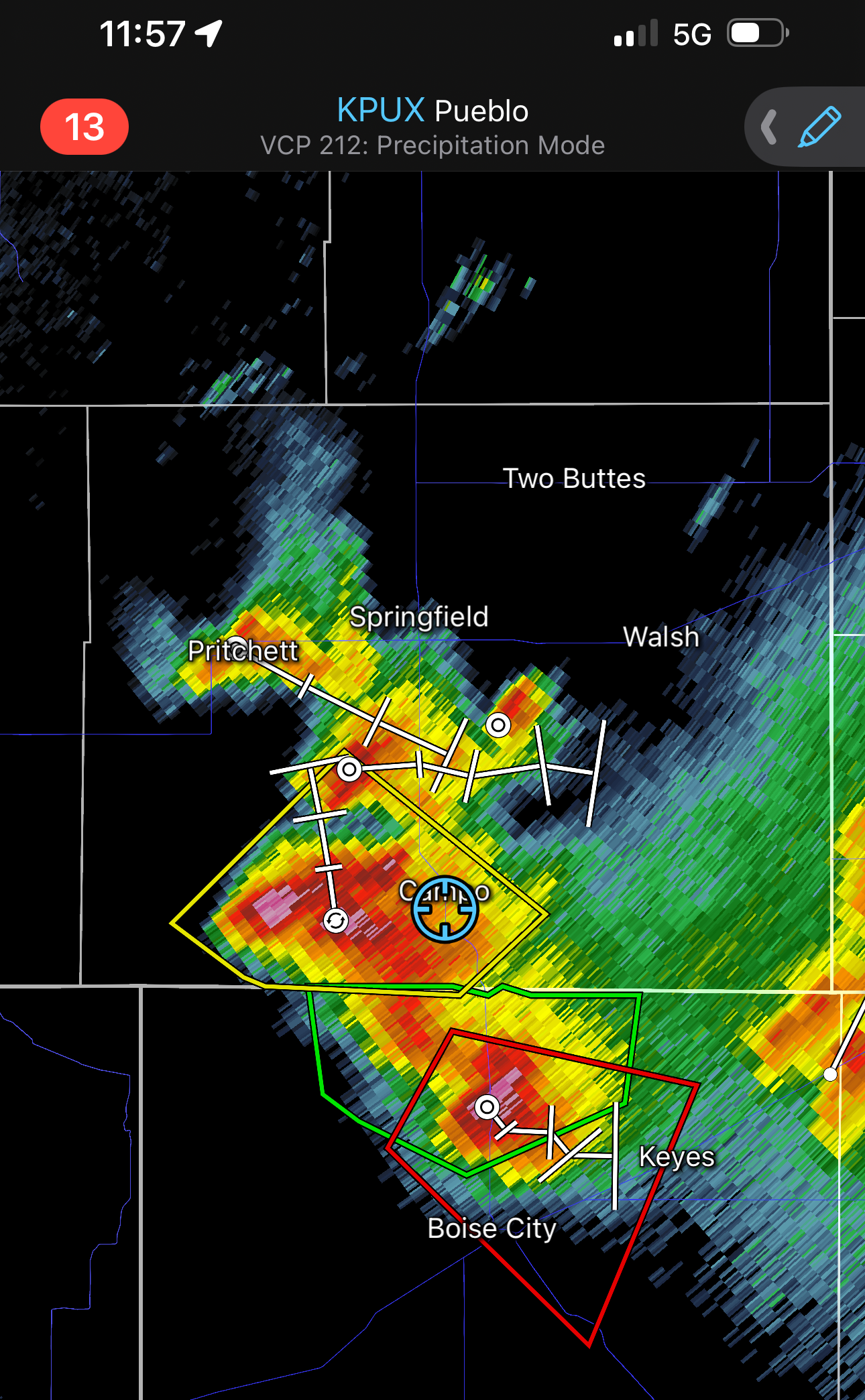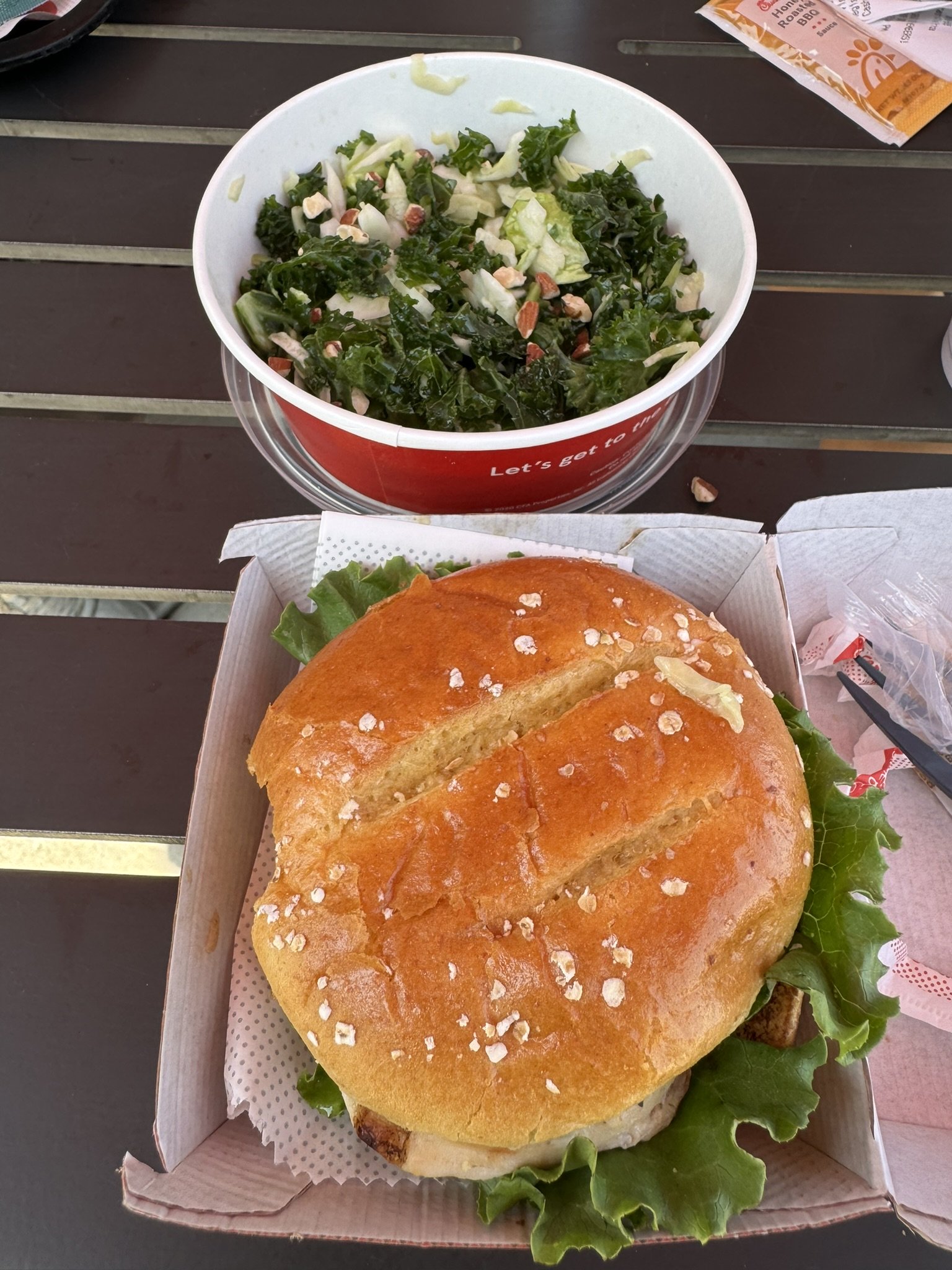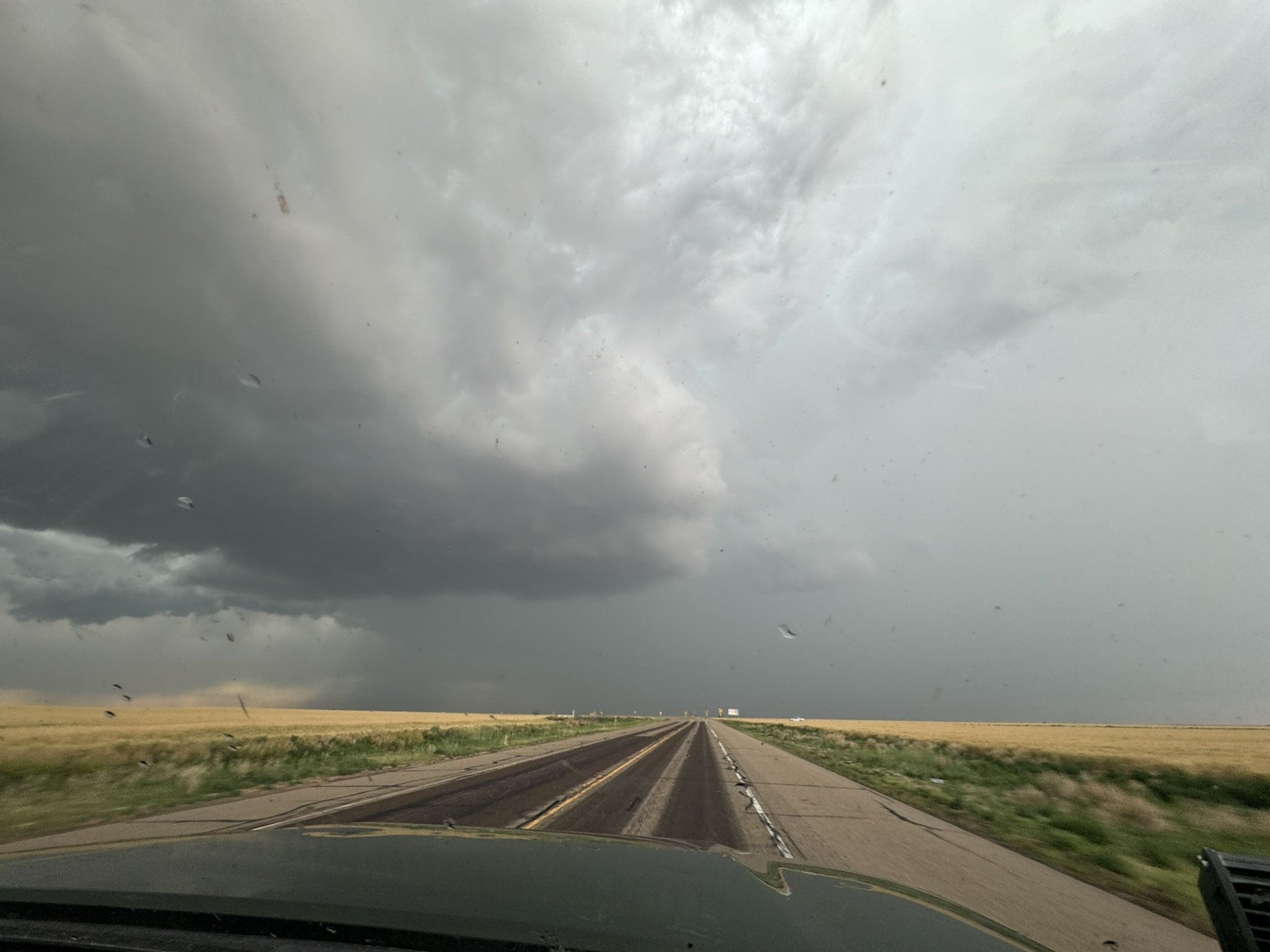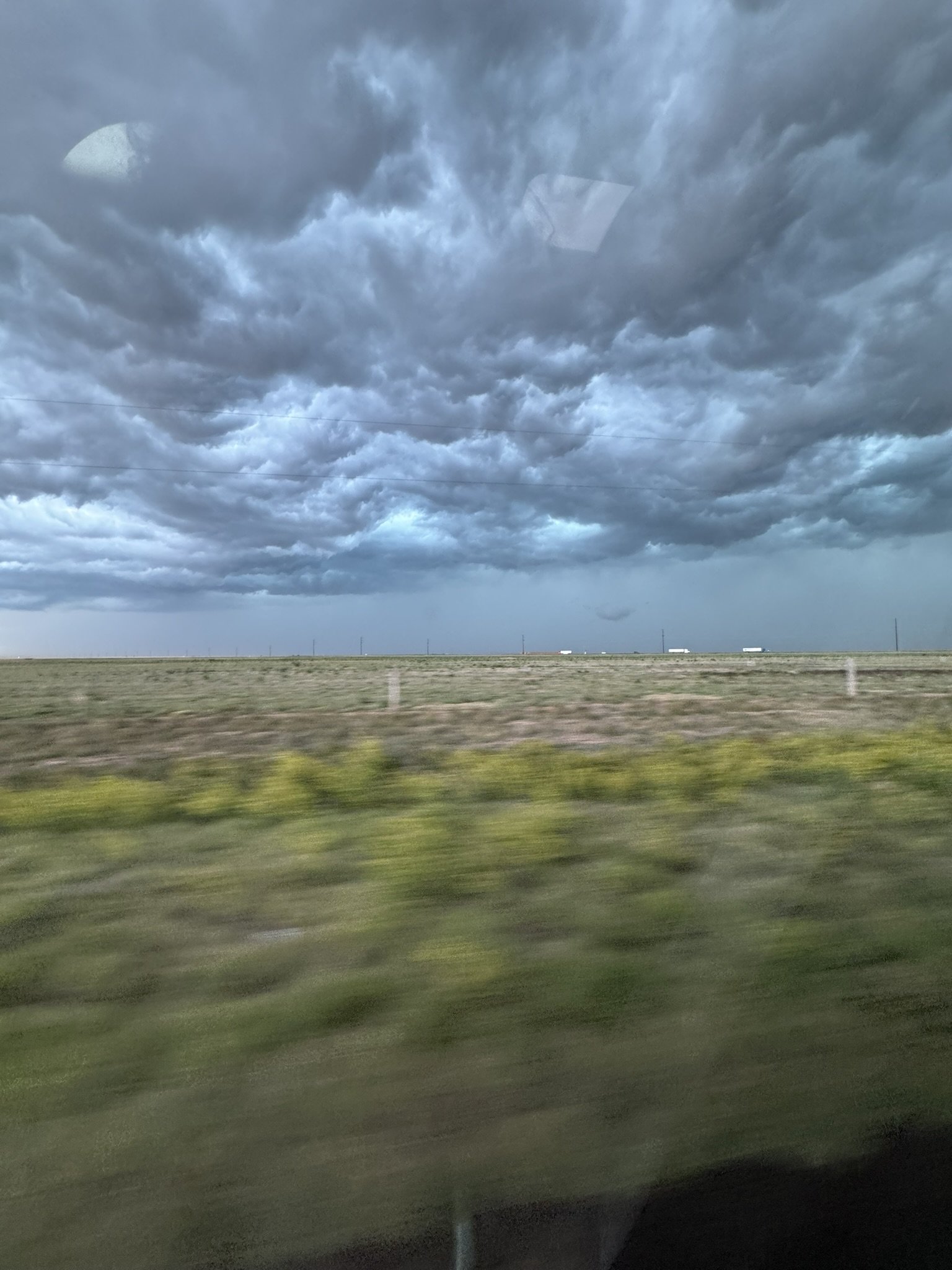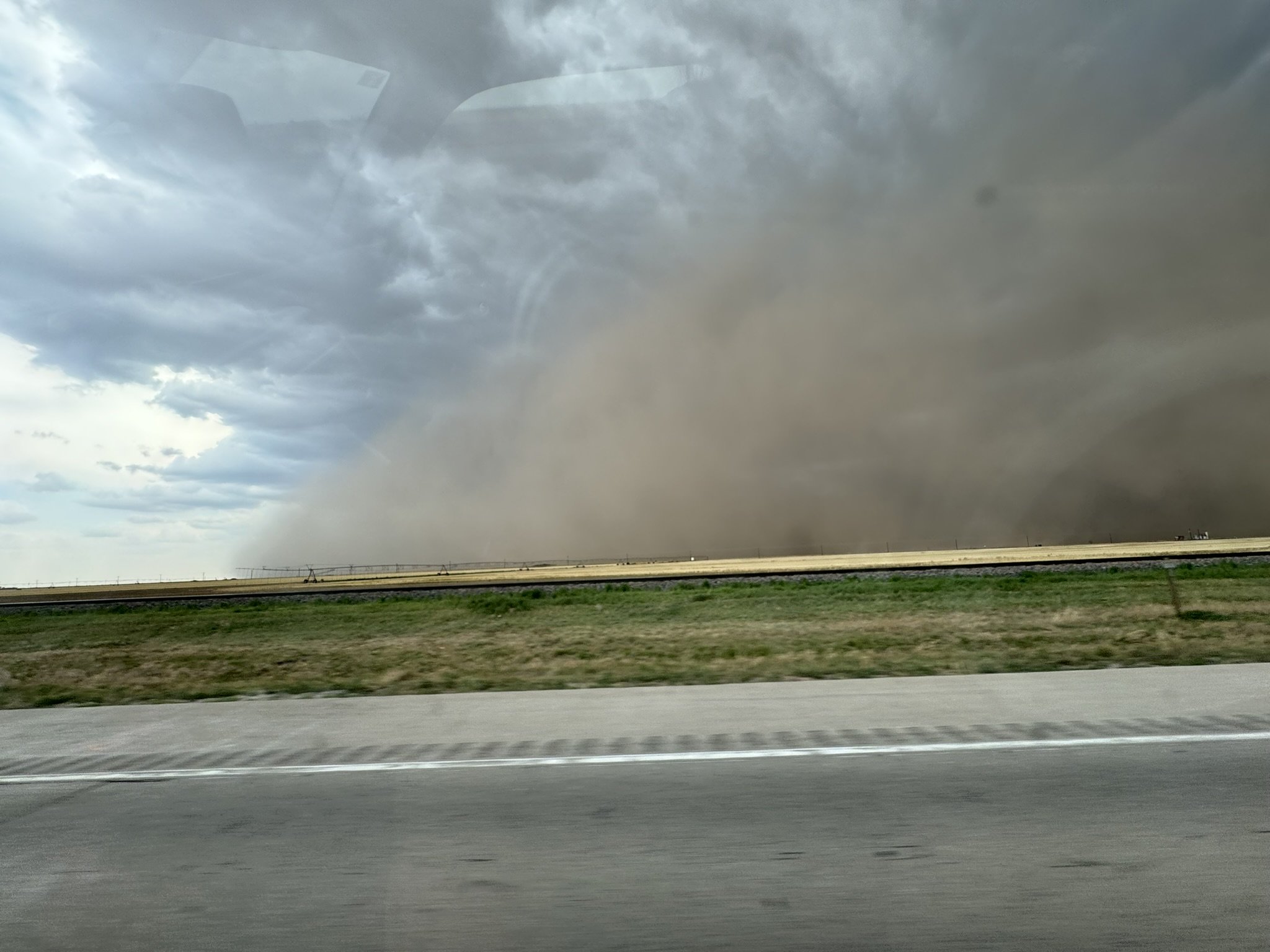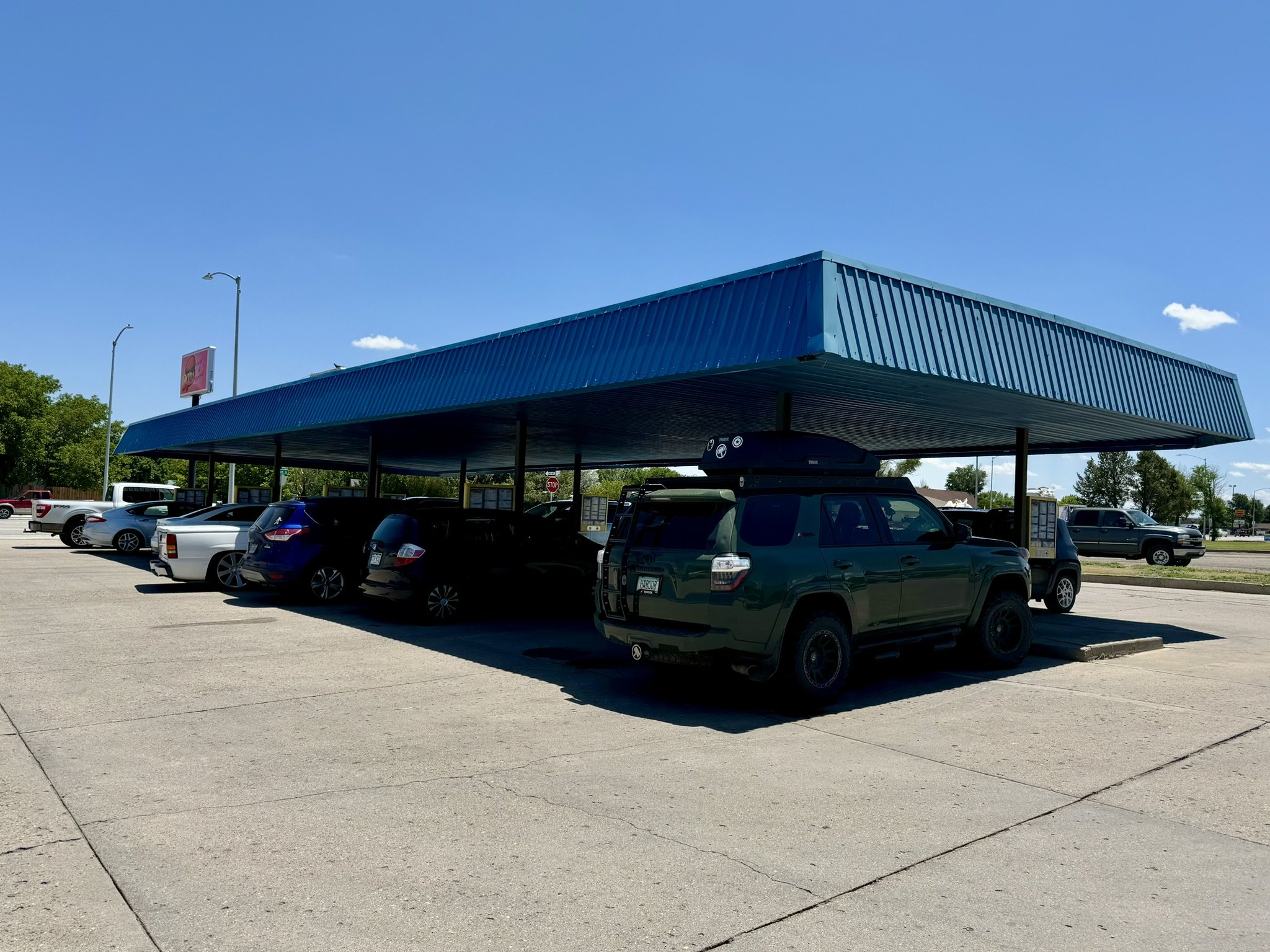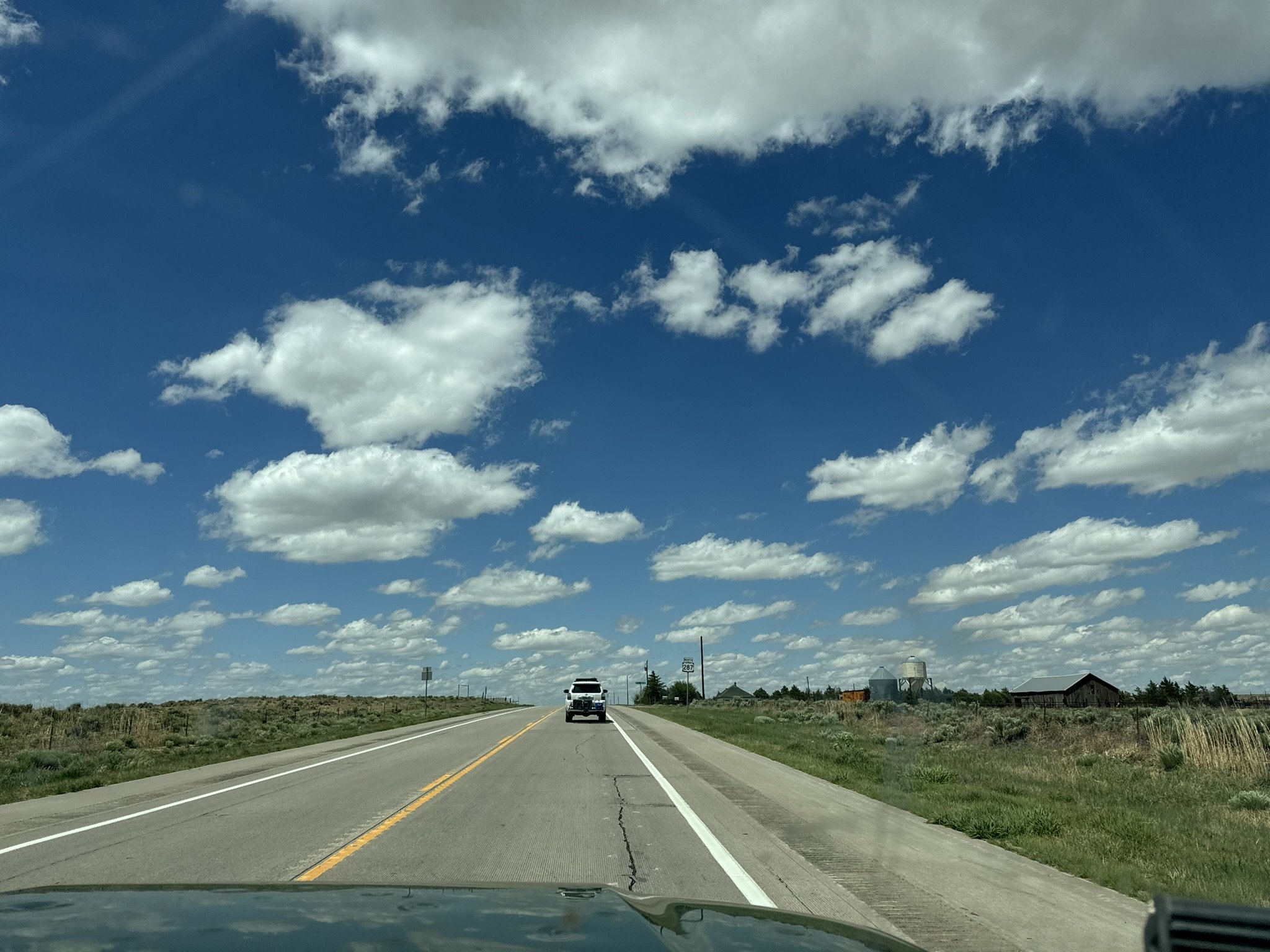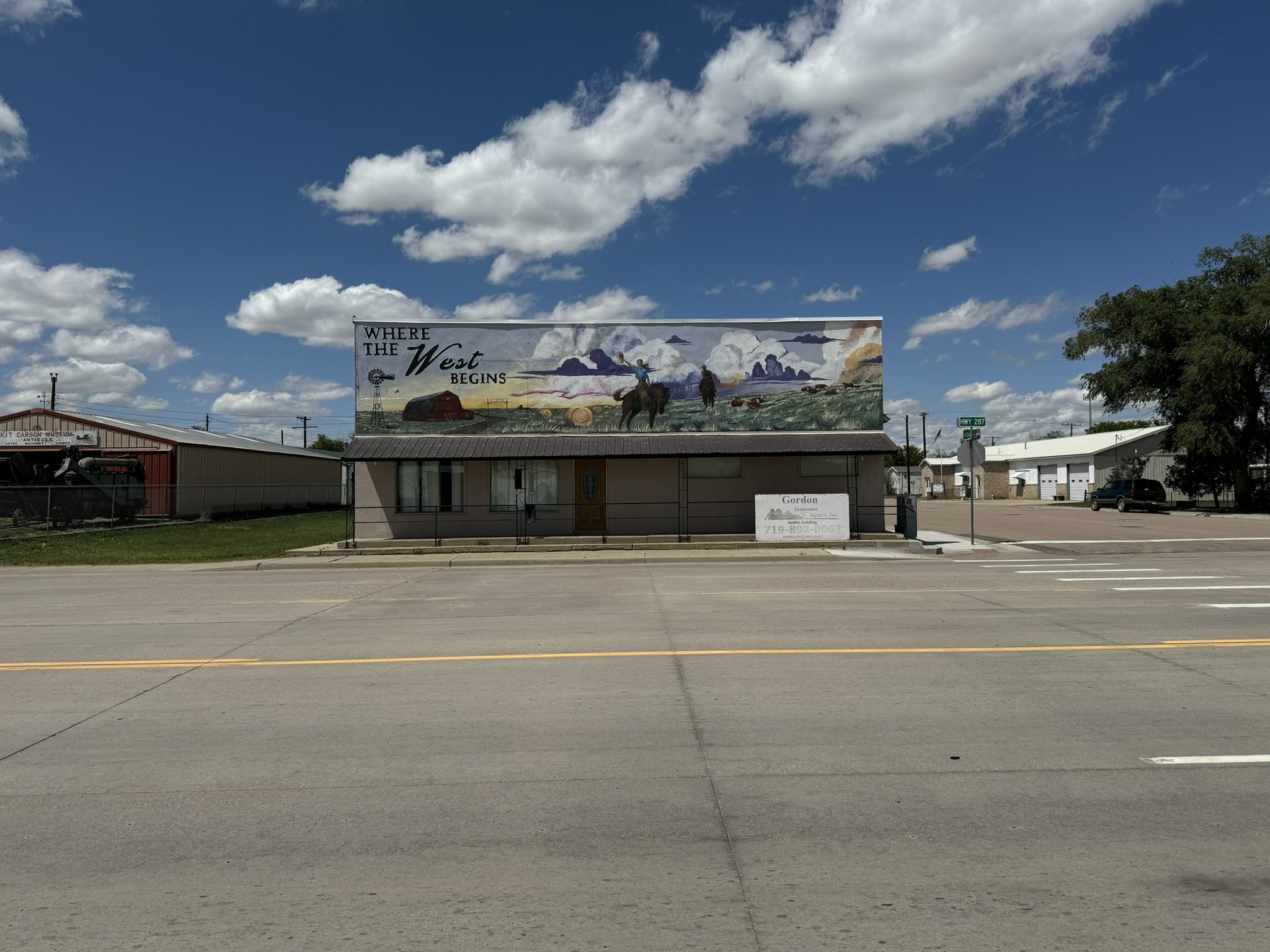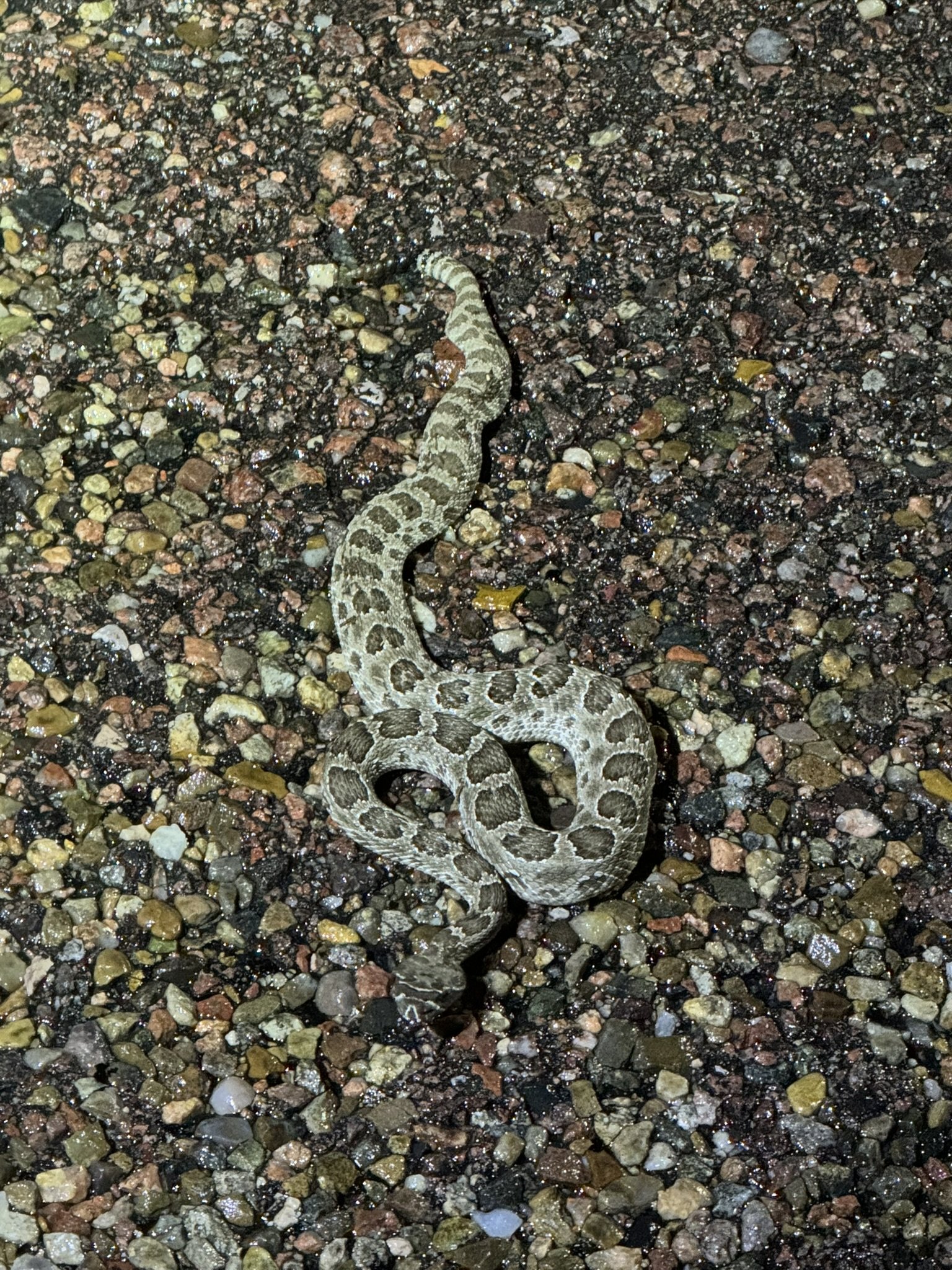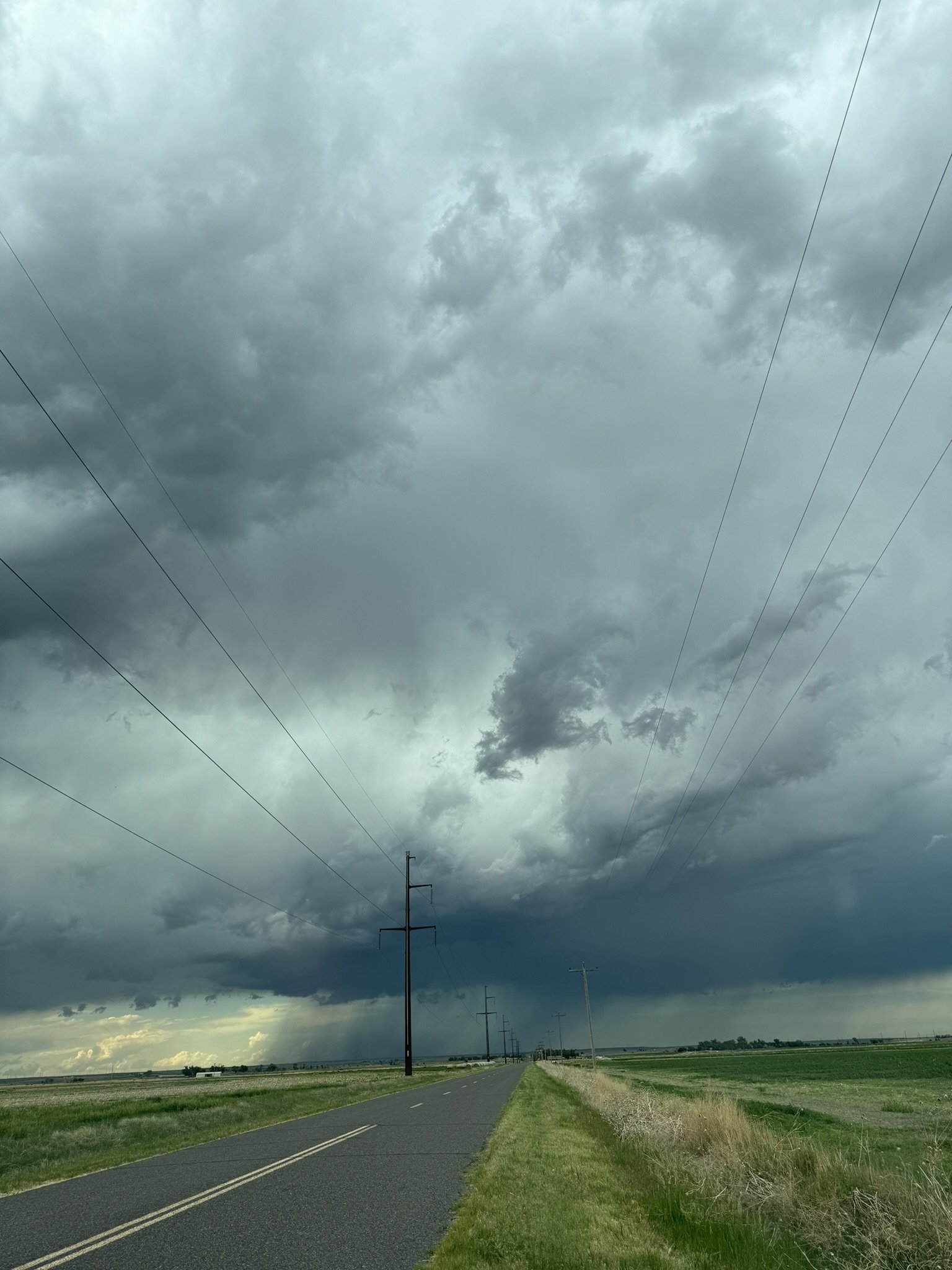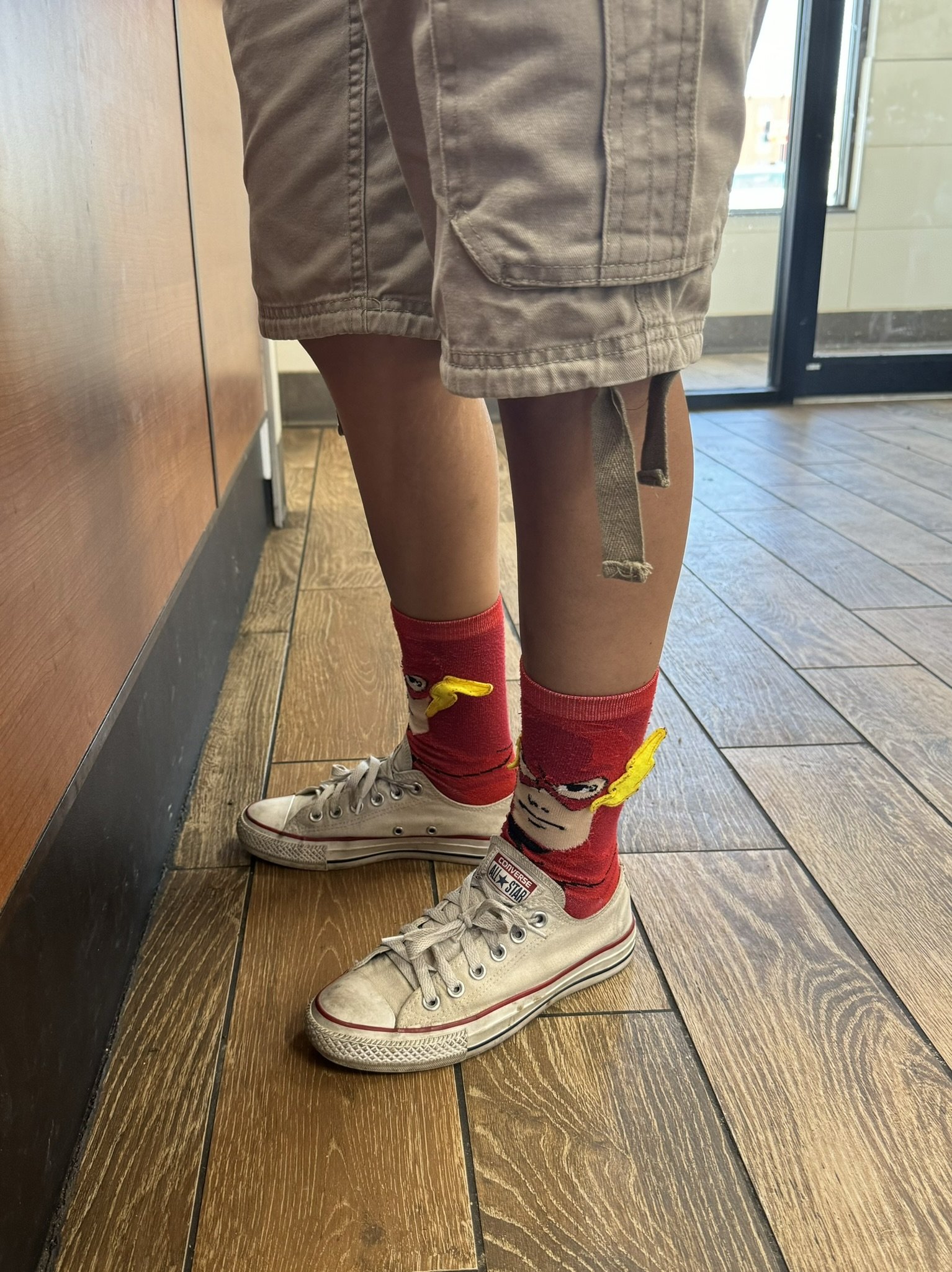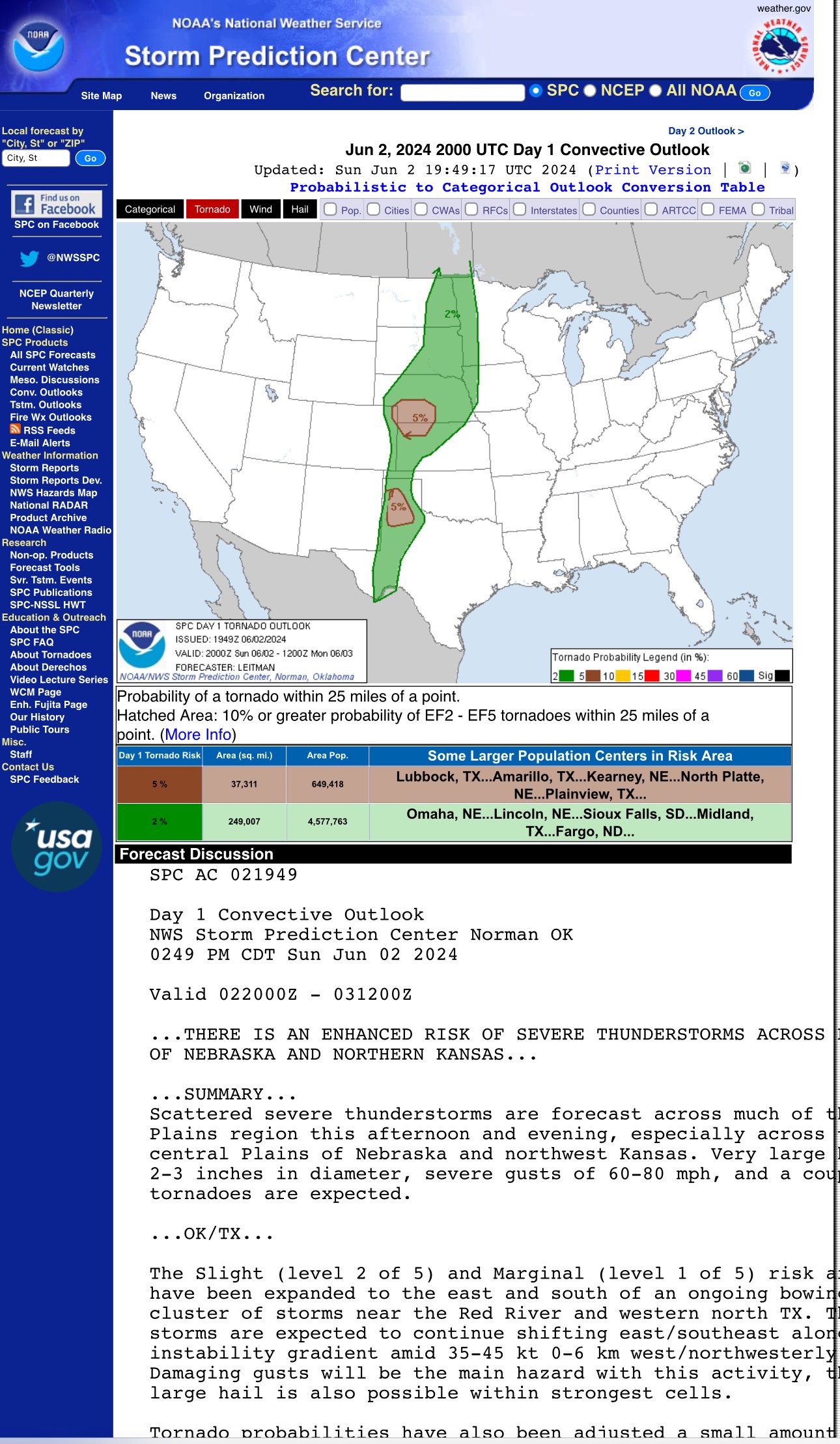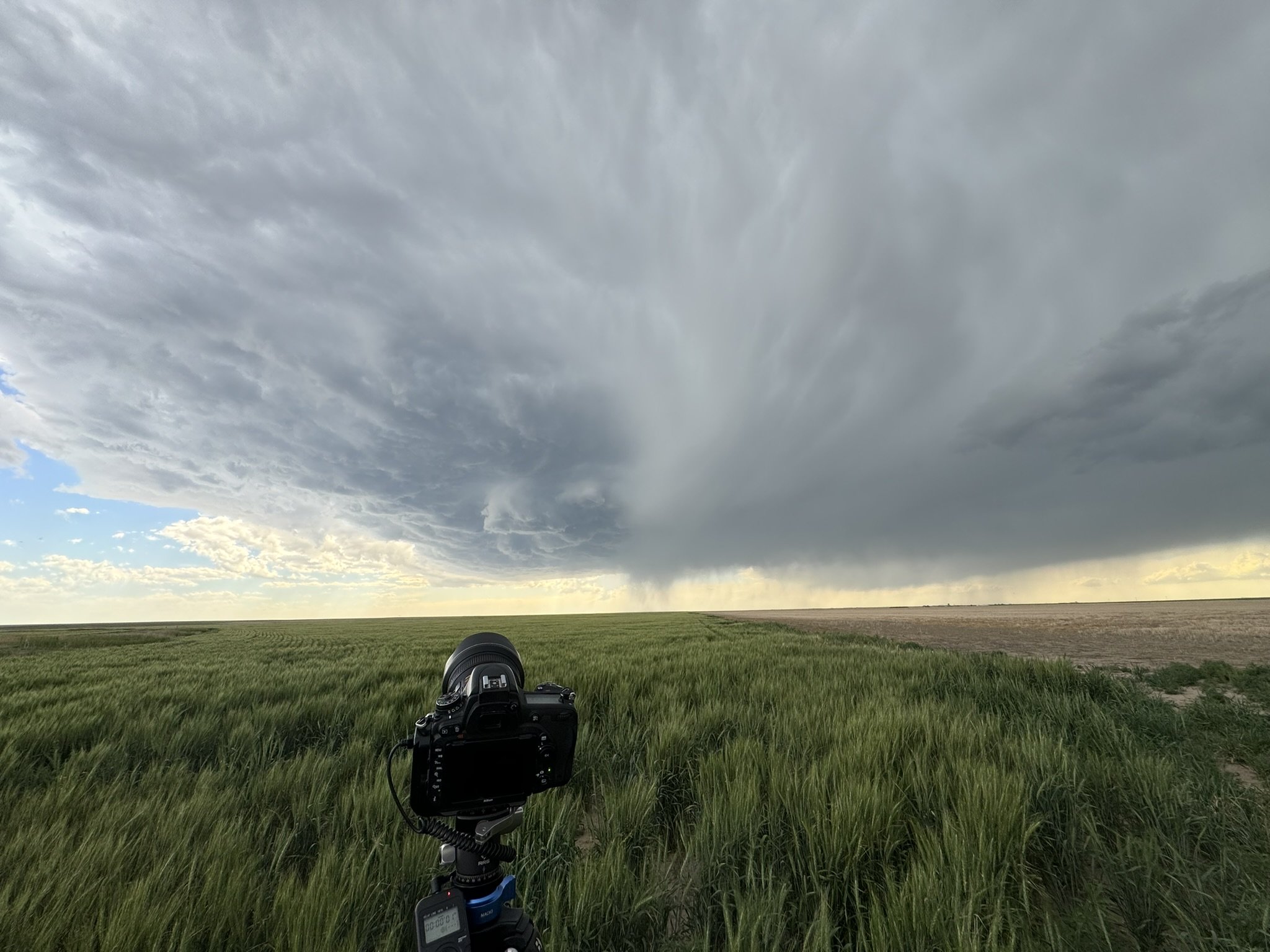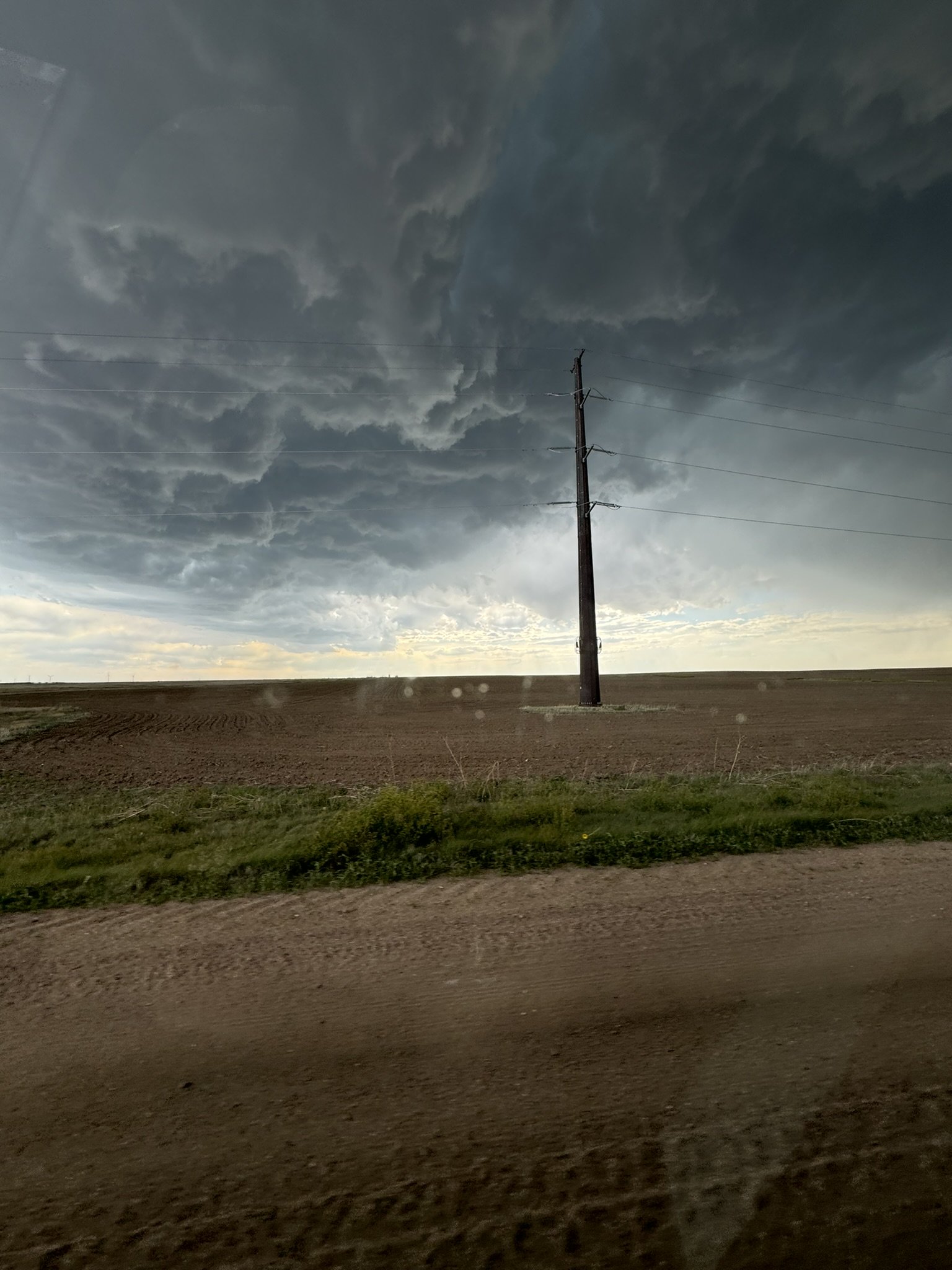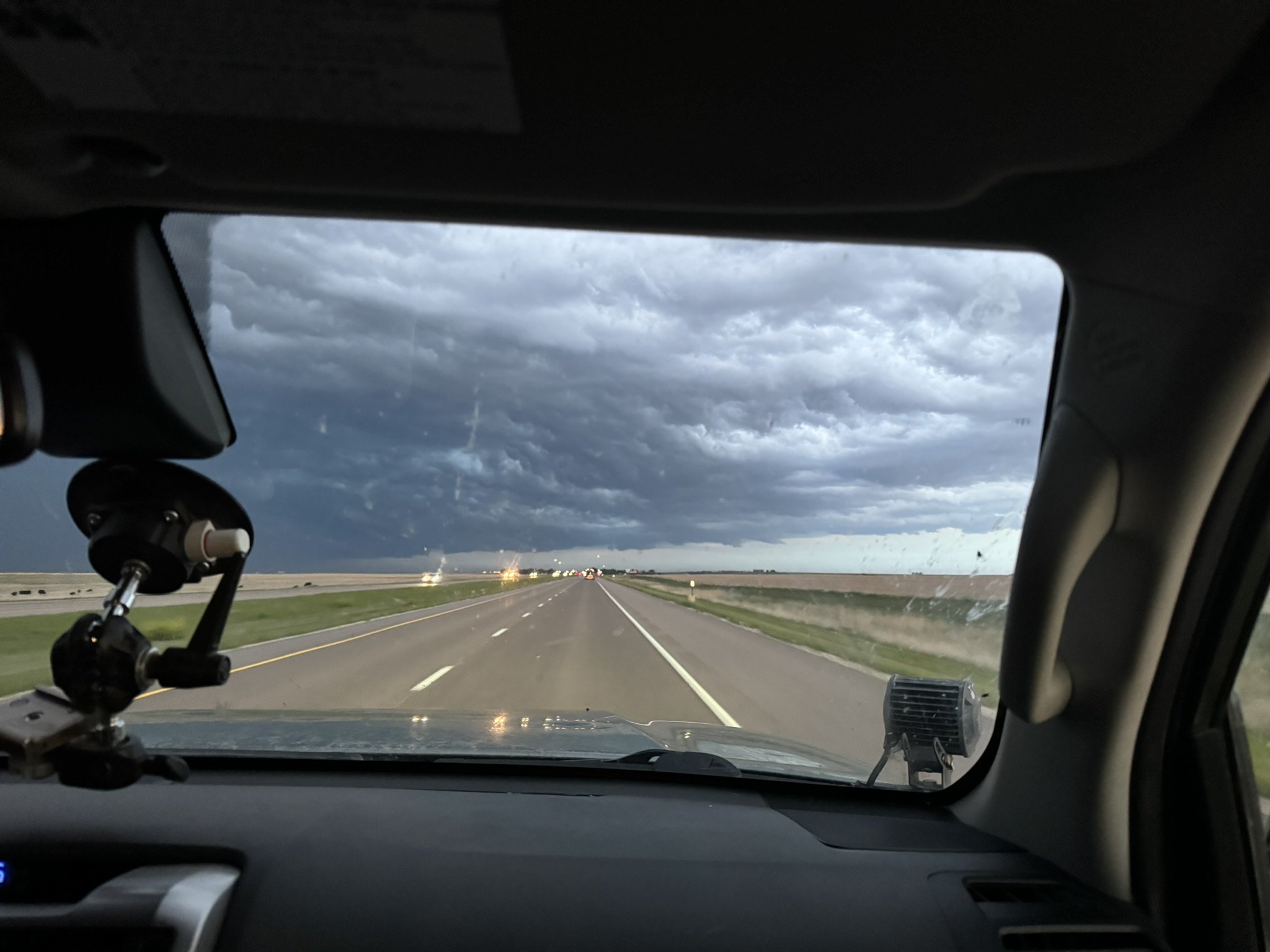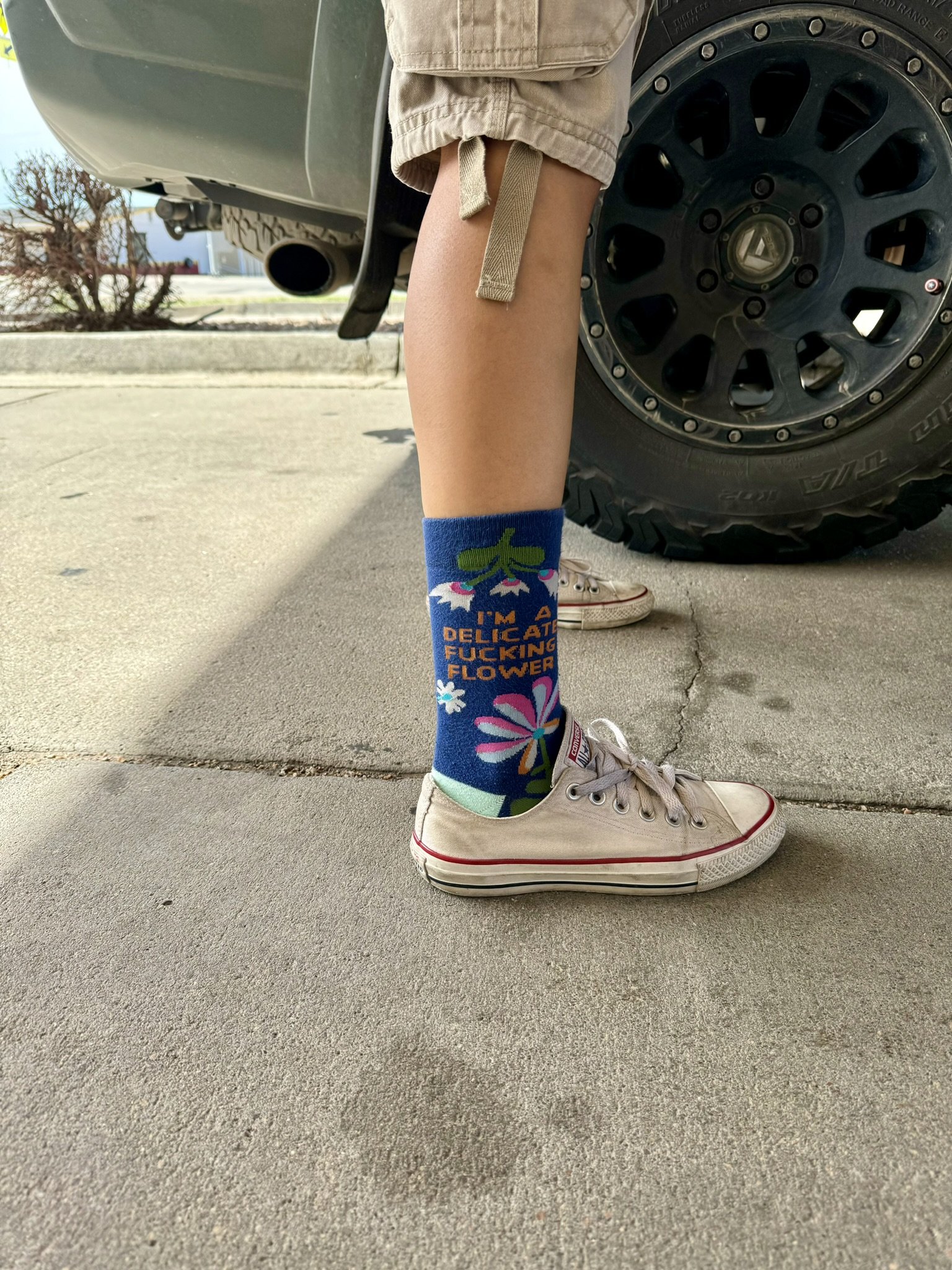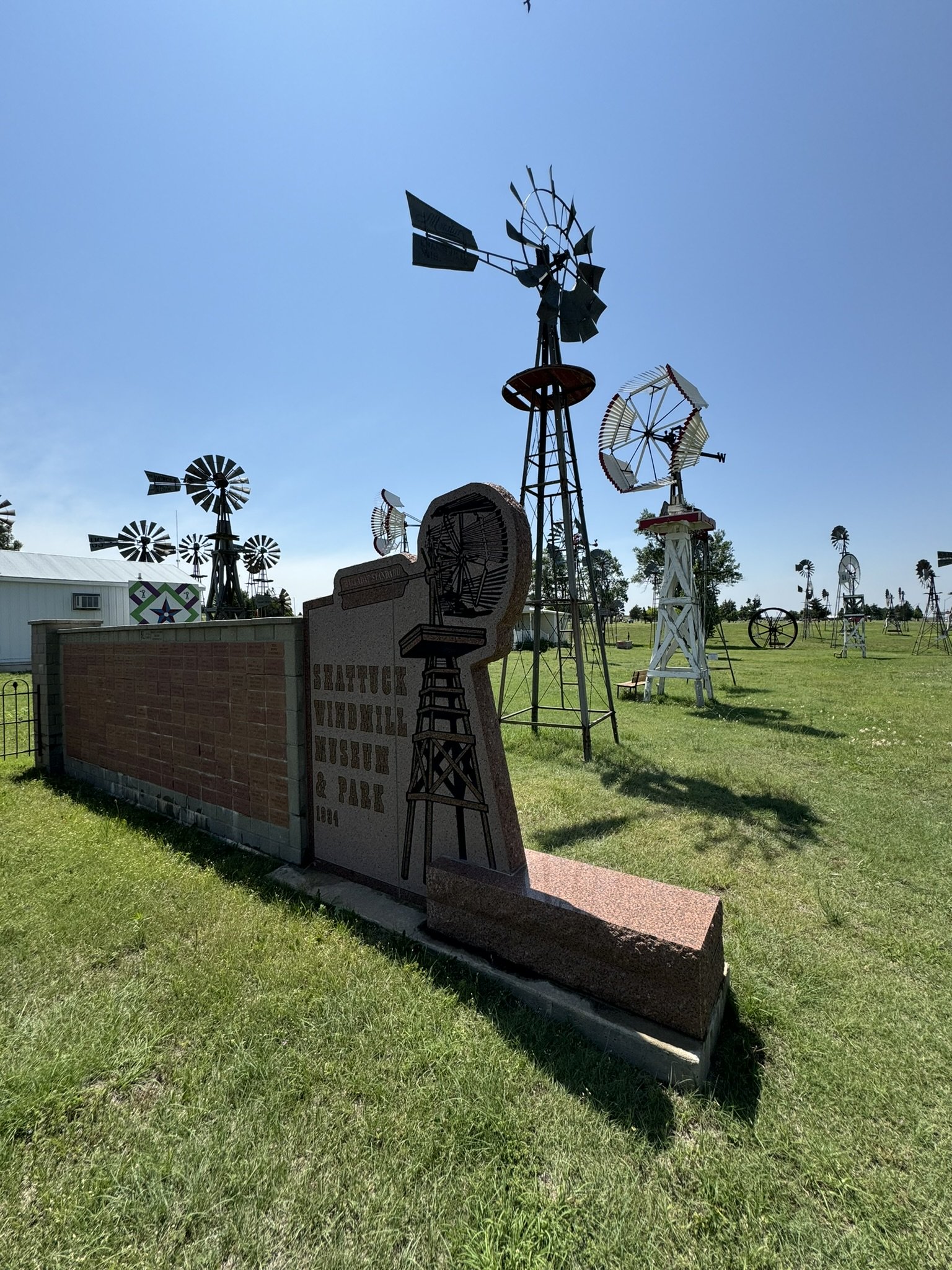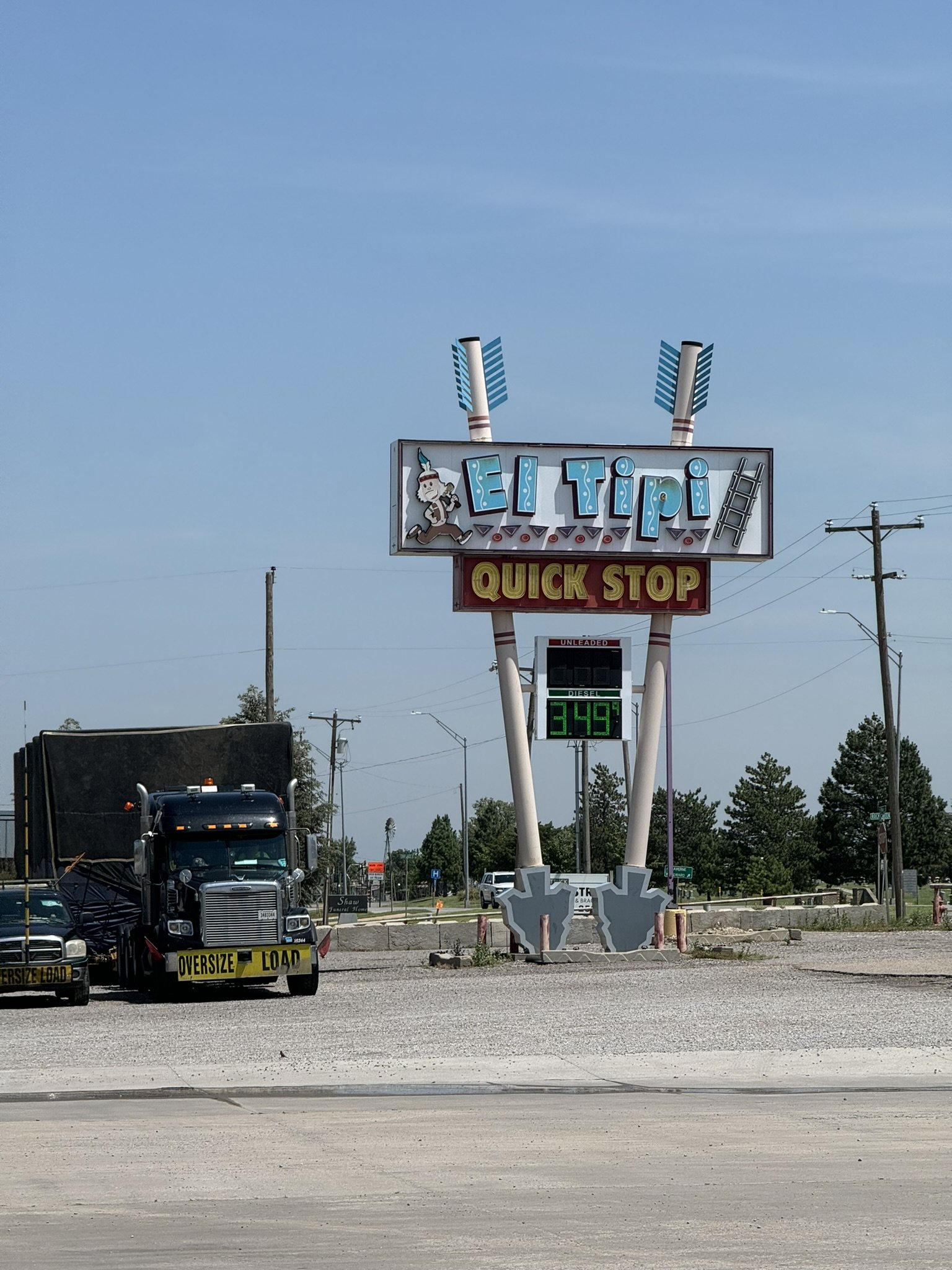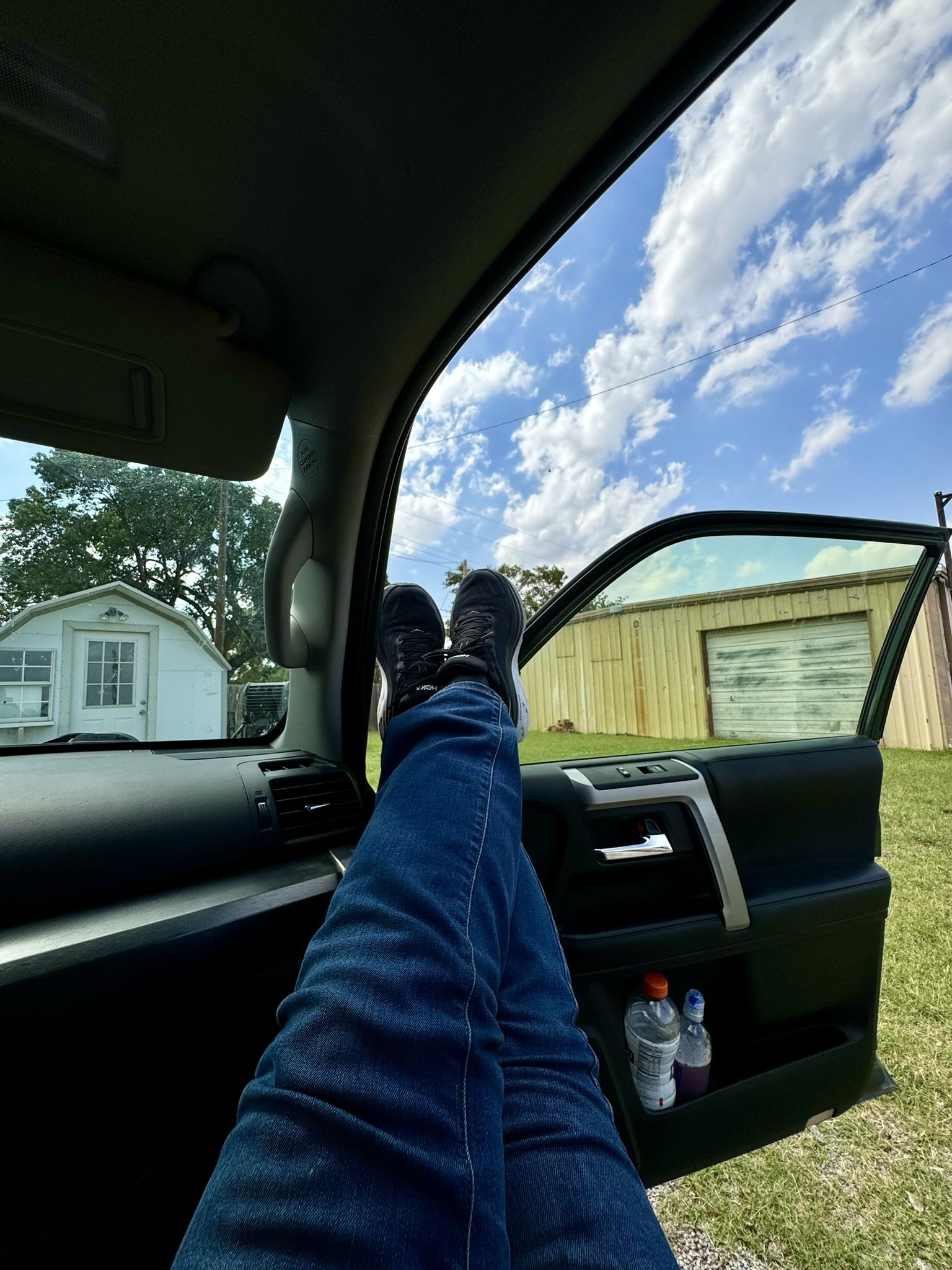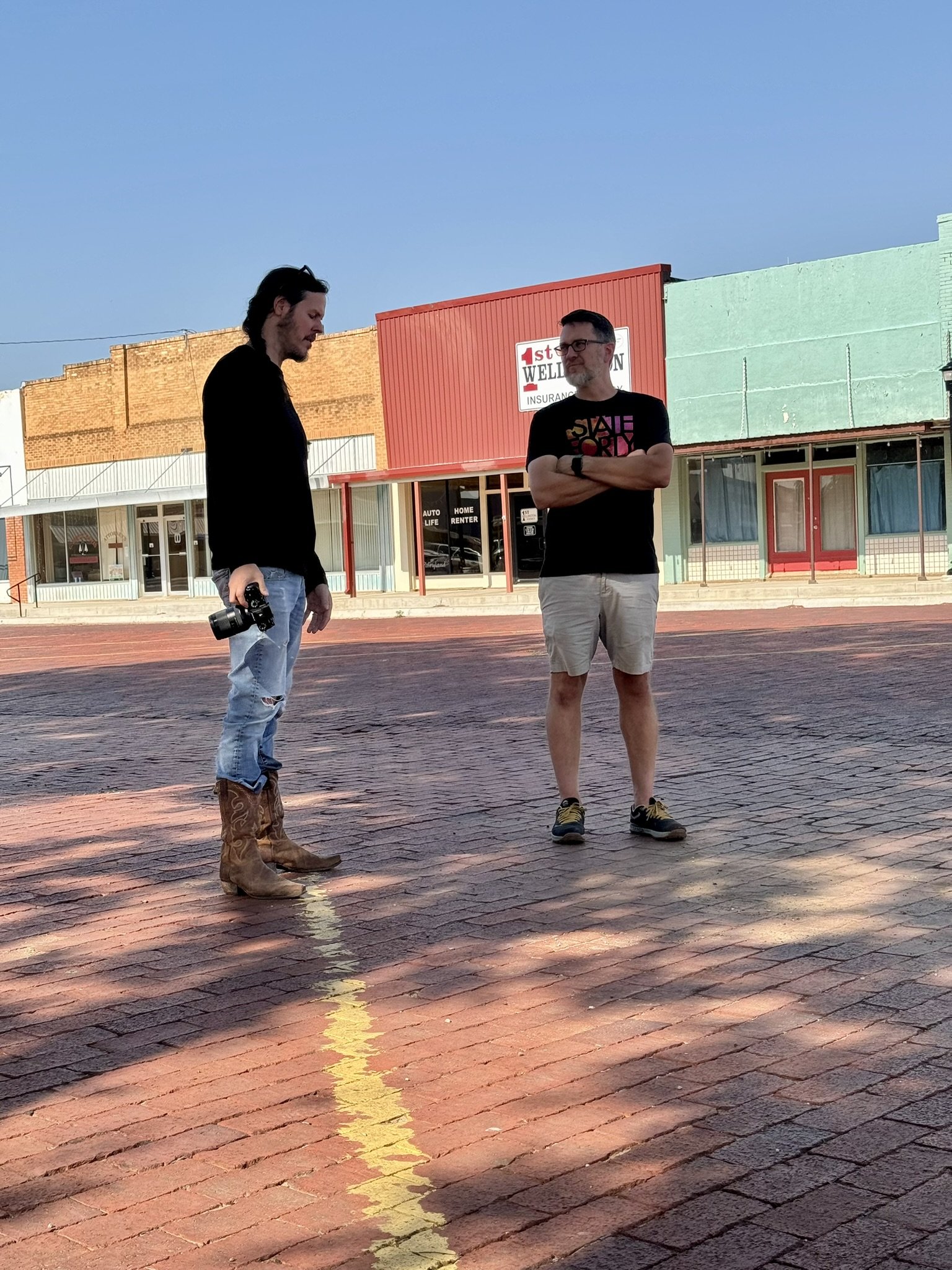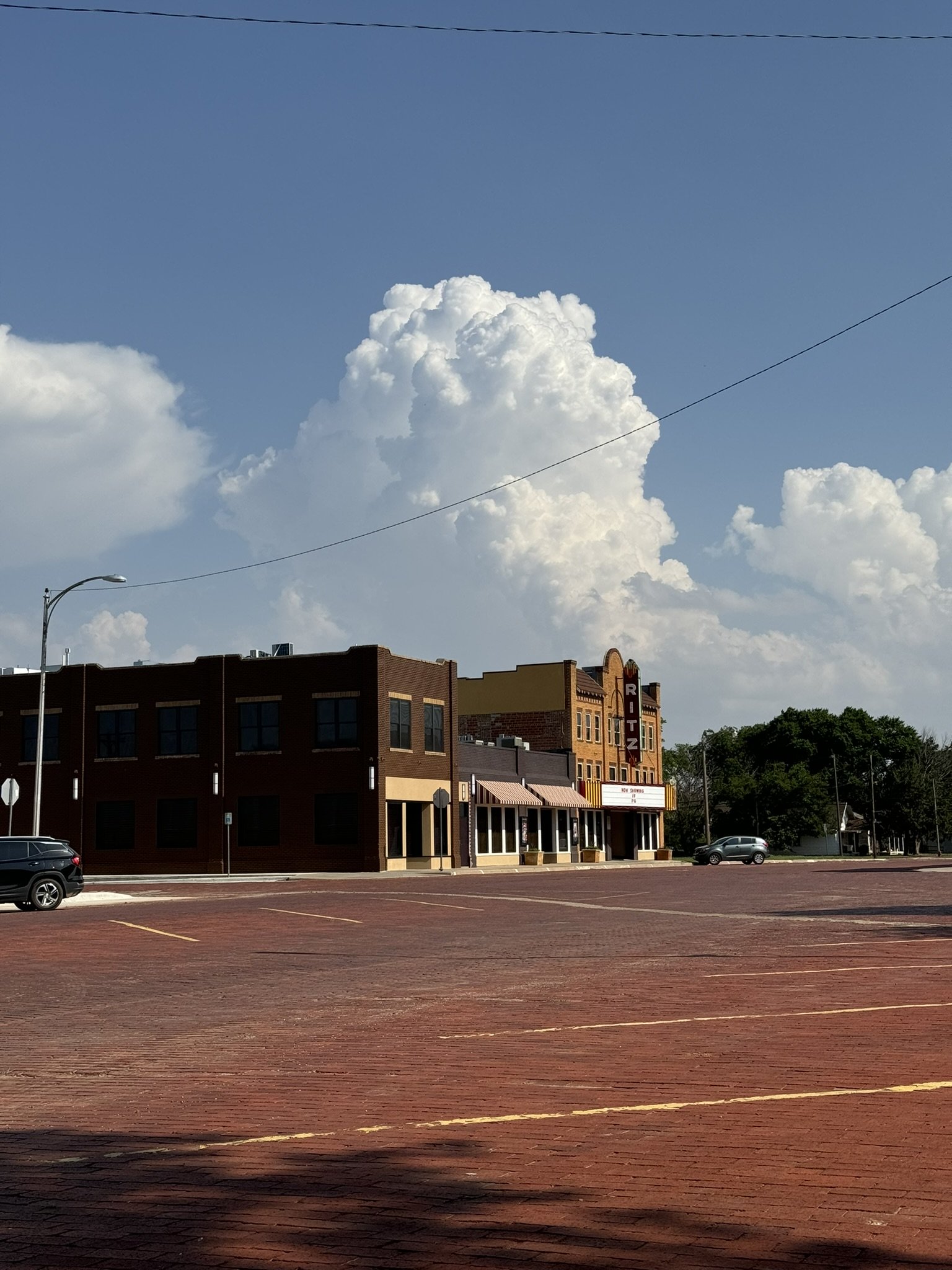After a long (10 month) and unwelcome break from traveling for photography, I’m finally back to doing what I love most: in May/June 2024, I completed my first storm chasing trip since 2018. This might seem an odd choice of photo trip for a person who typically enjoys long exposure, winter and/or minimalist photography. What can I say? I got addicted to storm chasing on my first chase back in 2017. Seeing a massive supercell or tornado on the Great Plains (or Prairies of Canada) is one of the most amazing things I’ve ever had the luck to witness and I felt I wasn’t quire finished yet with storm chasing. After chasing in back-to-back trips in 2017 and 2018, I took a break in 2019 and then, of course, the pandemic prevented trips for a few years. I had two recent (2022 and 2023) storm chasing trips cancelled because of unfavourable forecasts, but my return trip finally happened in late May and early June of this year.
Tornadoes (and the supercells that produce them) occur more often in the United States than anywhere else in the world: the U.S. gets about 1,200 tornadoes a year and the country with the second most - Canada - only gets about 100 a year. The storms most often occur in what is commonly called Tornado Alley, which stretches from Texas to North Dakota (and into Canada) and from Colorado to Indiana. The location and timing of tornadoes and supercells is becoming less predictable with climate change: ‘tornado alley’ seems to be moving more eastward and the season is expanding beyond its previous heights of May/June, but spring in the U.S. Great Plains is still a great time to chase storms.
Sign in the Denver Airport: looks like I’m in the right place!
All three of my storm chasing trips have been done with Mike Olbinski (if you visit his site, you might recognize a picture of my back in the Workshops & Tours section). I like going with Mike because he focuses on time lapse and photography, thereby putting us in good spots for great images and because his trips are small (in 2017 and 2018 he took just two clients at a time and in 2024 just three clients).
Storm chasing is utterly unpredictable. Though the height of the tornado/supercell season on the U.S. Great Plains is typically May/June, when you’re going for only eight days, you risk picking a week with no (or few) storms - which happens! That was the reason for my cancelled trips in 2022 and 2023. Storms can happen anywhere from Texas to the Dakotas (and into Canada in June and July), so while we meet up with Mike in Denver, we then chase wherever storms are predicted in that huge area. This means that just about the only things that are predictable is that you will almost always have to pack up your stuff every morning because we rarely stay in a hotel for more than one night and there’s going to be a lot of driving!
Day 1: Toronto – Denver – SE Colorado – Oklahoma Panhandle – Texas Panhandle – Oklahoma Panhandle
I took an early morning flight from Toronto to Denver (arriving around 10am) and we hit the ground running. Along with Mike, I was also travelling with two Sarahs - Sarah Alsayegh (whom I chased with in 2017) and Sarah Terry. Everyone was already in Denver when I arrived and Mike had us targeting the northernmost of a long line of storms stretching from the Oklahoma panhandle into Texas that day. With the distance we had to cover we weren’t going to make it far into Texas, so that northernmost storm was our goal.
Four photographers: four camera bags, nine tripods. Ready to go!
While chasing, Mike is able to to judge the size, intensity and direction of storms with up-to-the-minute radar he accesses on a tablet.
We are the blue dot and we were trying to get in front of, and south of the tornado-warned (in red) storm around Clayton.
Out the window! Already looking beautiful
Some nice clouds, but not the storm we were looking for.
Always exciting/a little scary to get one of these on your phone as you’re heading towards a tornado-warned storm
Our storm turned out to be a good one but we had trouble getting to it because it kicked off really early (earlier than expected and earlier than is typical with spring thunderstorms which generally kick off in the late afternoon). Despite only stopping for quick bathroom breaks, we had a long way to go and some road work slowed us down right at the end, so we didn’t get on the right side of the storm in time. It was still an exciting race to get there, we did get to see a bit of the storm in the Texas panhandle and we got some nice lightning on our first day. For a day that wasn’t meant to be much of anything, it was pretty exciting!! Three states and over 450 miles made for a great start to the trip.
An early stop on Day 1 and some nice lightning.
Day 2: Guymon, OK – Kansas – SE Colorado – Oklahoma Panhandle – Texas Panhandle
BJs in Lamar, CO. A great diner where you get to place your order on a phone!
Our second day was a probably the best of the trip. We started out the day slowly, as our setup was in SE Oklahoma, only about 2 ½ hours from where we had spent the night in Guymon. That allowed us all to have a good night’s sleep, some breakfast and to try to get an extra nap in, since we knew it was going to be a long day.
We had lunch in Lamar (Colorado) and bumped into a few storm chasers (including Greg Robbin) - some of whom I’d met on previous chases. One of the things that I love about storm chasing is the community. People come from all over the world to chase in the U.S. in the spring. It’s so exciting to temporarily be part of this community; it’s fascinating to talk to people who are so committed to and passionate about storm chasing.
The forecast from the Storm Prediction Centre for Day 2. Within these large areas, we are trying to pinpoint a photogenic storm.
Getting interesting! Sorry for the bug splatter out the front window!
Lovely ligtning
Great lightning aear sunset
A crazy image. This was shot over 3 seconds by my iPhone in basically pitch dark!
The storm that Mike had his eye on started up around 3pm and early on produced some amazing lightning (see some pictures above). We were all thrilled with every picturesque strike, hoping our lightning triggers had caught them. Near sunset (around 8pm where we were) the storm started to develop more structure so we kept following it, glimpsing its growing size and shape both on the radar and with every lightning strike that lit it up. When we stopped to shoot it we were presented with the most amazing rotating LP (low precipitation) supercell lit up by lightning in the night. Every picture that showed up on the back of the camera showed how huge and beautiful it was, though in the dark it was hard to see with the naked eye.
By about 11pm the storm was dying down and Mike made the decision to head south into Texas to try and get a start on the long drive we’d have to get closer to the storm we’d be targeting the next day. The only problem: another storm (tornado-warned and showing rotation on radar) was right in our path. We waited to see if it would cross the road and when Mike felt he could skirt the hail core and rotation, we made a run through it (called ‘punching the core’). It was a bit of a scary, rain-soaked dash, made especially nerve-wracking as tornado warnings rang out from each of our phones as we were driving through the storm, but we made it. We arrived at our hotel for the night – tired, elated, exhausted, thrilled – at 2am!
A long exposure nighttime image on the iPhone as we waited for a gap in the storm.
Driving towards (and then through) a tornado-warned storm!
Day 3: Dalhart, TX – Oklahoma Panhandle – Texas Panhandle
We started off the day heading south, looking at models showing a line of storms around Lubbock, TX, but in the end we decided to chase further north on a storm near Dalhart, TX.
Mike’s ride: getting us where we needed to go!
Yummy lunch!
Through the front windscreen. Starting to look good!
Whale’s Mouth clouds out the side window of the car.
Dust storm! A little crooked, out the window of the car.
A word on predicting storms: there are so many variables in choosing which storms to chase, which will be photogenic and which will have structure and potentially produce a tornado. It is really very difficult to be right all the time. You hear chasers talk about factors like CAPE (convective available potential energy), wind shear, dew points, the dry line, outflow boundaries, surface winds, helicity and other factors - they all play a roll in targeting a specific storm. When picking a target, we were using forecasting models such at the GFS and HRRR which allow you to know approximately where storms are predicted (hoped?) to be, but trying to be in the exact right place for a photogenic storm can be pretty difficult.
Our storm started off looking nice, and even produced a bit of a dust storm (not a full-blown haboob, according to Mike) but eventually it merged with other nearby storms and just started to look messy and not very photogenic. In the end we bailed just before sunset and decided to get a good night’s sleep as we were all dragging from just 4 hours sleep the night before. That day was the day we hit 1,000 miles on the trip, with many more miles to go.
Day 4: Vega, TX – Oklahoma Panhandle – Colorado
We had about a five-hour drive from Texas to Colorado for the storm we were targeting this day, so we left Texas just after 10am. We took our time and ended up waiting a while in Hugo, CO with Dennis Oswald, Max Conrad and Daniel Plätz It was great to see Dennis after meeting him on a back road in 2018. The storm started up around 4:30 and began to develop some great structure. As we watched, we saw a lowering at the centre of the storm and it seemed on its way to dropping a tornado, but in the end, it didn’t. It then merged with some other storms and got a bit messy, but we headed south to get out of the rain and check out a much smaller storm south of the main one. It turned out to be an absolute beauty! Fantastic structure and gorgeous colours right at sunset. It was dropping beautiful lightning bolts, too. What a night!
Back at BJ’s Burgers! We met the founder's granddaughter, who was so very proud that she was still working at her family restaurant that "everyone said would fail, when my grandfather started it."
Not every view out the front windscreen is dramatic. Here’s what it looks like early in the day, before storms fire.
Kit Carson, CO
Around 11pm we decided to call it a day and on our way to a hotel, we went through an area that had received a lot of rain – at one point there was sitting water halfway across the road and for 2 or 3 seconds, as we drove through it, it felt like we were in a car wash! We saw a car pulled over on the other side of the road, with the driver waving us down. We thought that he might be wanting to tell us that the road ahead was washed out, but no, it was Greg Robbin trying to stop cars from running over a rattlesnake in the road. We stopped to look at the juvenile rattler (I stayed in the car!) and then Greg gently coaxed him off the road.
Day 5: Limon, CO – Nebraska
On day 5 we added our fifth state (Nebraska) and crossed over 2,000 miles driven! We started out the morning in Limon, Colorado with only about a 2-3 hour drive to get into position for our target. We headed up north and had a nice lunch in Fort Morgan with Greg. Things started to get interesting early, but then died down. The storm we were on had some amazing structure for a little while, but didn’t produce much after that. Mike hoped it might get more energy as it moved into an area of higher temperatures, but it never really did. Around 10pm we decided to find a place to stay in McCook, Nebraska as the storms we hoped to chase the next day were going to start up near there.
The HRRR forecast model - showing us where we might want to be for storms in the next few hours
Skies starting to look dramatic.
What they never tell you about storm chasing: the waiting!!
Day 6: McCook, NE – Colorado – Kansas
On Day 6 we passed 2,500 miles driven. We started off in McCook with two possible storms to chase – one to the north and one to the south. It looked like the south storm had the potential to be an isolated supercell, so we drove into Colorado to catch it as it fired. It produced some lovely structure, gustnadoes and even a brief landspout!
Sarah’s socks: we hoped they would guarantee us lightning bolts, but they didn’t that day.
The Storm Prediction Center was showing a possibility for tornadoes all across the country!
Whale’s Mouth clouds towards the end of the evening
Driving to our hotel.
End of the night: stopping for gas and seeing a gorgeous sunset.
At one point we were photographing on the edge of a farmer’s field when he drove up, wanting to check we weren’t liable to spark a fire in the dry conditions. He asked what we were doing, and when we said we were photographing the storm, he seemed puzzled. “That ain’t no storm,” he said, “You should have seen the one that came through a couple of weeks ago. It tore the siding off the house. That was a storm. This ain’t no storm” and with that pronouncement, he drove off.
Around sunset the storm produced a huge and beautiful shelf cloud which we time lapsed for a while. We wrapped up around 9:30pm, but needed to be down south for our seventh chase day, so we (well, Mike!) drove for another 2 ½ hours before we stopped for the night. We arrived in Dodge City around midnight pretty exhausted and that was a wrap for another day
Day 7: Dodge City, KS – Oklahoma – Texas
Earlier in the week, this day didn’t look very promising but then the HRRR forecast model started showing an isolated supercell in the Texas/Oklahoma panhandle area so we headed south from Dodge City expecting about a 3 or 4 hour drive to get in position. Along the way, we looked at each new run of the HRRR and occasionally the storm would disappear and then just reappear in the next run. There a lot of elements which seemed to indicate it could be a monster storm, so we were excited, but there was also some uncertainty.
Maybe my favourite of Sarah’s socks!
Shattuck Windmill Museum
As we were driving along an isolated and empty dirt road we heard a huge bang and the tire pressure indicator on the driver’s side rear tire started dropping quickly. We pulled over to a sound you never want to hear on a remote dirt road – the loud hiss of air escaping the tire. We got out and Mike simply got to work changing it. The only problem – the jack was too short and we couldn’t get the punctured tire off. After some serious creative thinking and a team effort, we got it off and put on the full-sized spare onto the car. High fives all around and it only took about 30 minutes!
A small delay on an isolated dirt road.
So quirky!
Waiting for storms to fire
Pecos Hank and Mike Olbinski waiting for storms.
Those towers look promising!
We ended up a while later in Wellington, Texas along with a whole heck of a lot of other chasers who also thought the predicted storm looked promising. It’s called a ‘chaser convergence’ when this happens and we basically filled up every gas station, restaurant and coffee shop in the small town. It was great to meet up with chasers we’d seen earlier on our trip and others I’d met in previous years. We even got to hang out with Pecos Hank, who I’ve been following for years, but whom I’d never met before. There was lots of excitement in the air and mid-afternoon we headed out to intercept the storm. The only problem: each time a tower would go up, and we headed to it, it would fizzle out. Another one would go up and then fizzle. Within a couple of hours it was obvious that it was going to be a bust. In fact, a friend of Mike’s called it “a crippling bust” because everyone had had such high hopes. It was a bit of a disappointing way to end the trip, as I know Mike really wanted to get us on an epic storm to finish up, but we’d had an amazing 7 days – chasing on every one of them and only truly busting on this one.
As we were watching yet another storm fizzle, a farmer drove up and asked us if we thought there would be a storm. He said he’d seen all these cars whizzing up and down the roads and figured it was storm chasers. What he really wanted to know was whether his fields would get hit with hail. “I’ve got wheat fields from here to Childress County so I’d like to know,” he said. We could tell him it wasn’t likely to happen that day.
Day 8: Texas - Denver - Toronto
There were no storms predicted on Day 8, so we decided to call the trip and head home. Even though we didn’t get that epic storm, it was fantastic to chase for seven straight days and we did see some amazing stuff, especially early on. Sarah and Sarah were great travel companions and it was so much fun to chase with Mike again - he got us where we needed to be, was a superstar tire changer in pretty difficult circumstances, and an indefatigable driver logging over 3,200 miles driven through five states! Thanks for a great adventure, Mike!
If you would like to look at images from this and my previous storm chasing trips, take a look at my Storms of the Great Plains gallery.
If you’d like to comment, please feel free to leave one below. You don’t need to make an account, just enter a name and click ‘comment as guest’.


